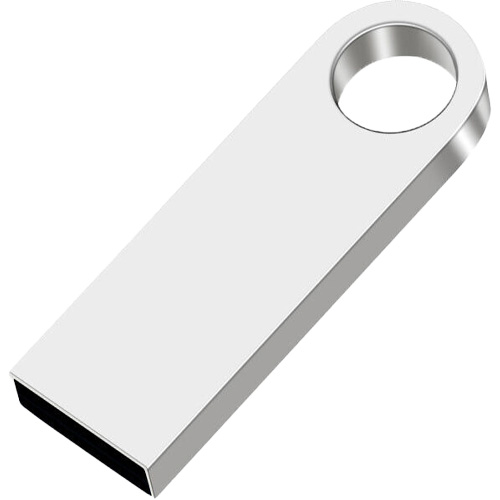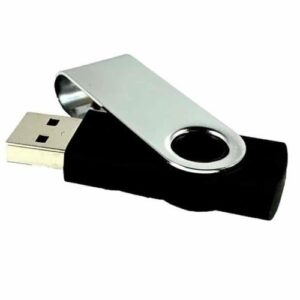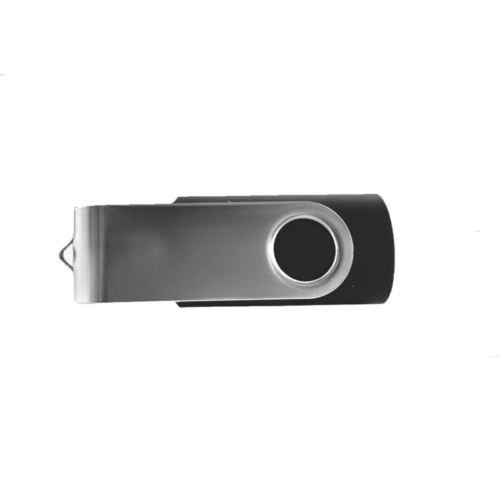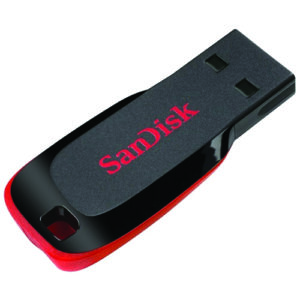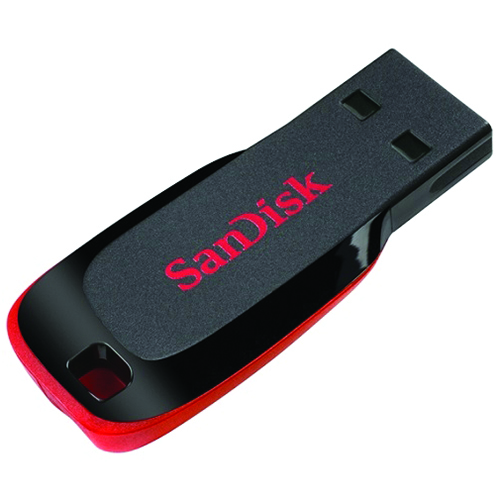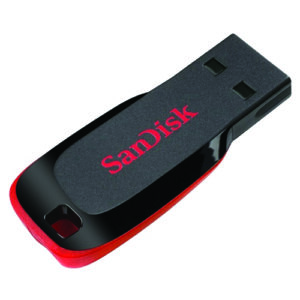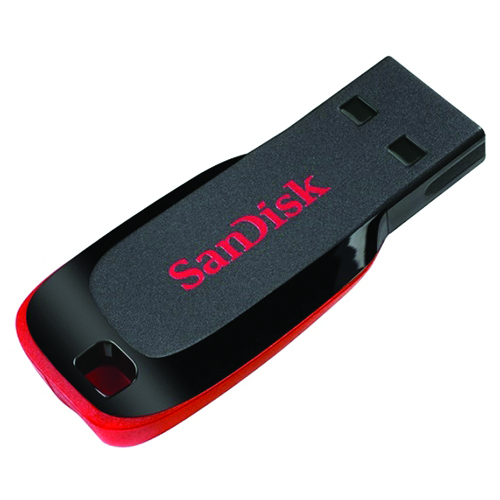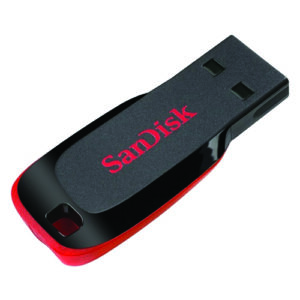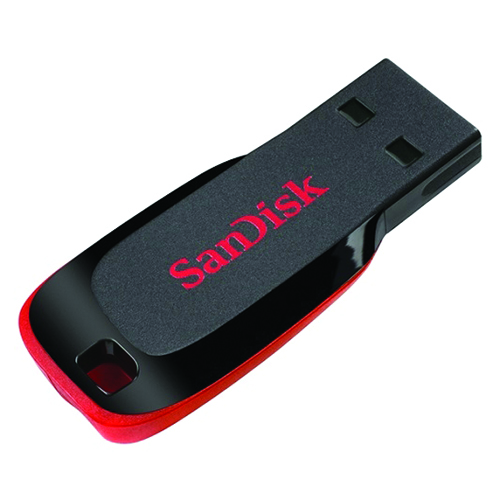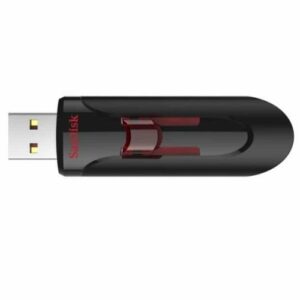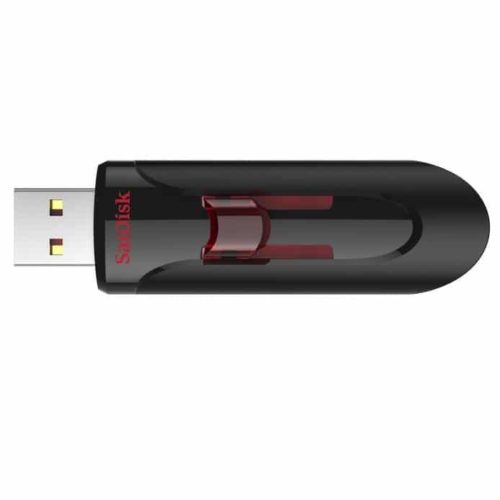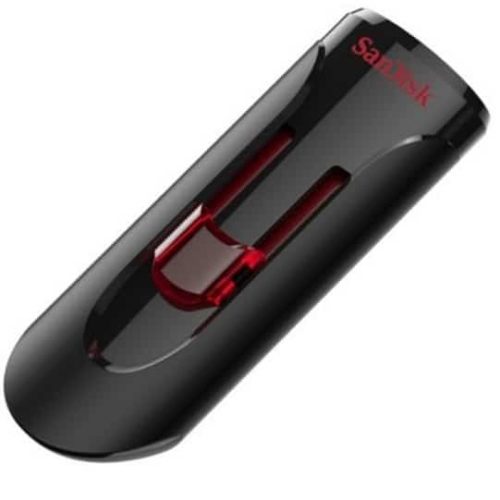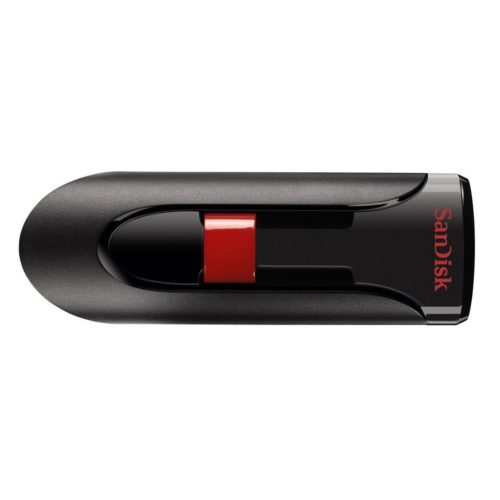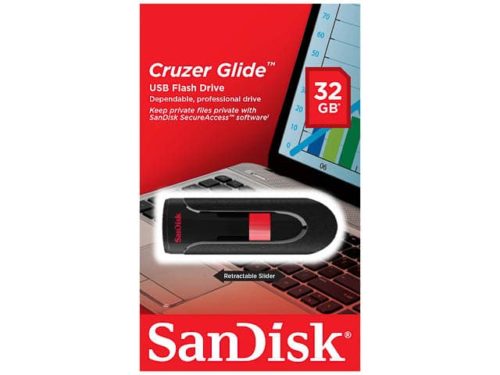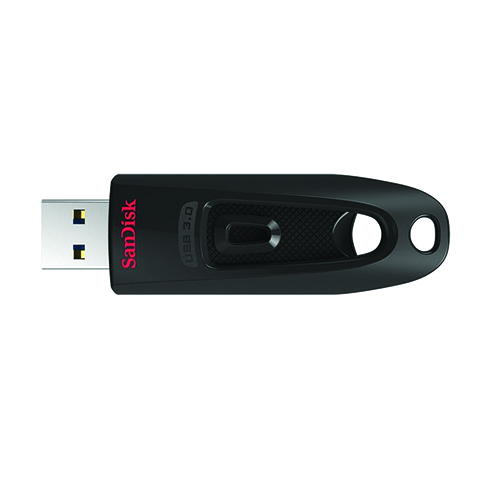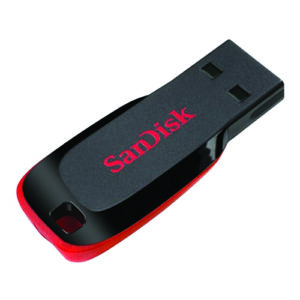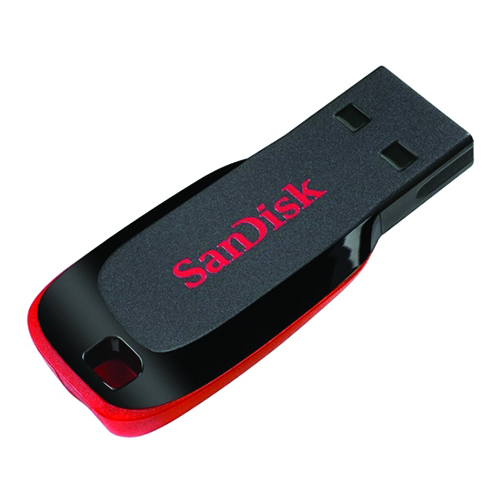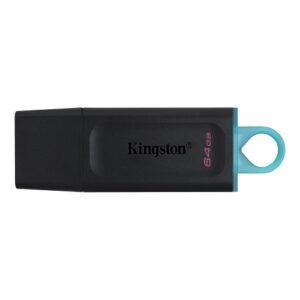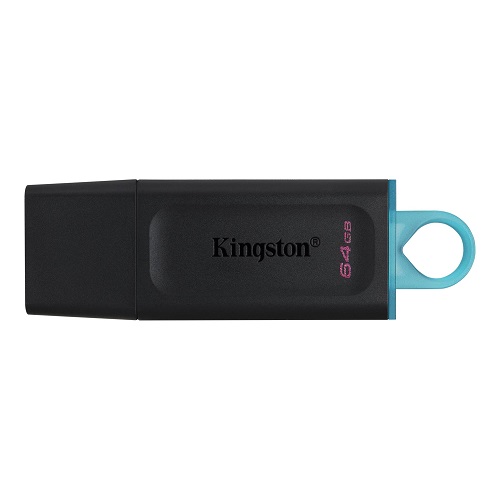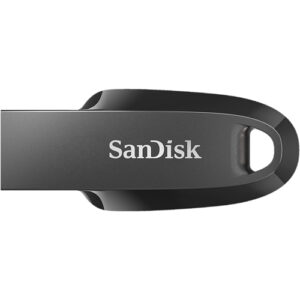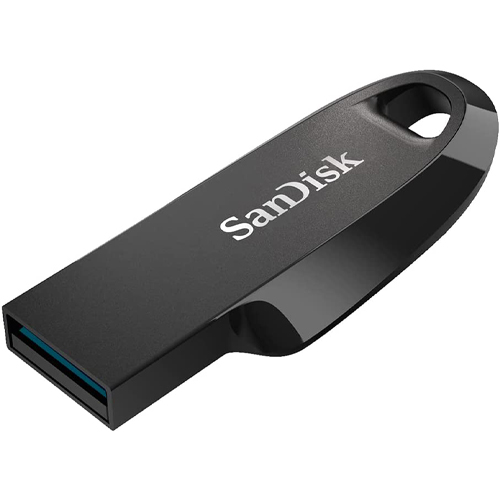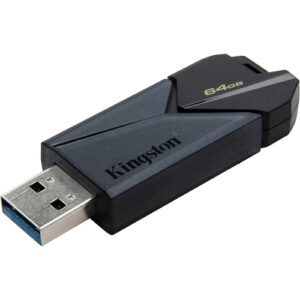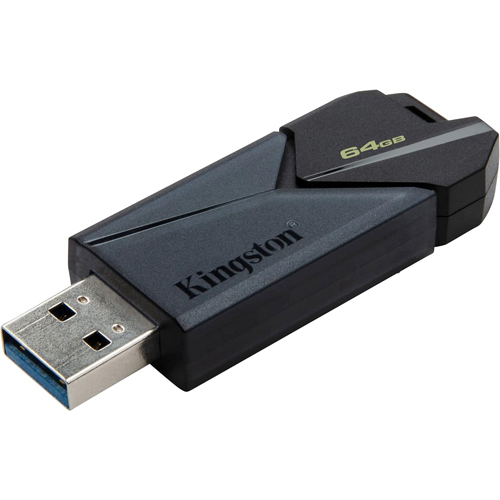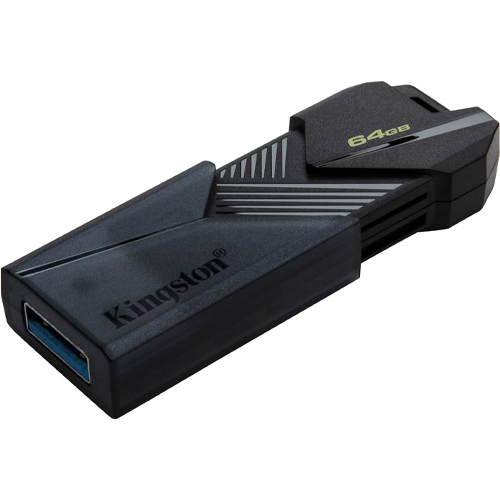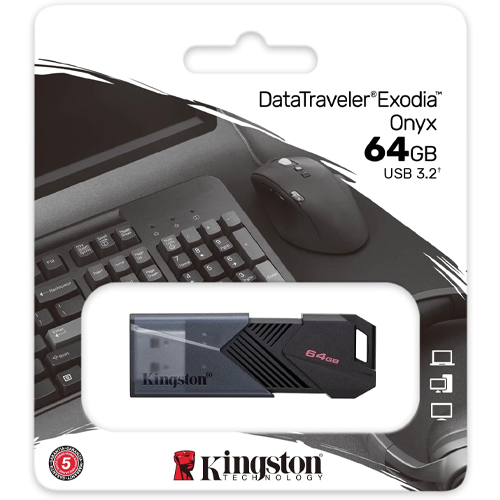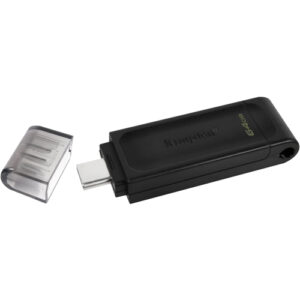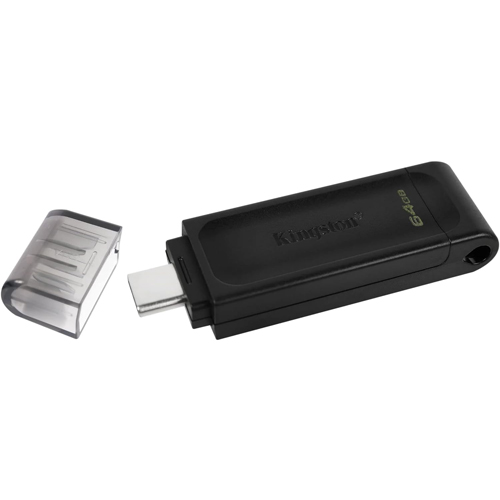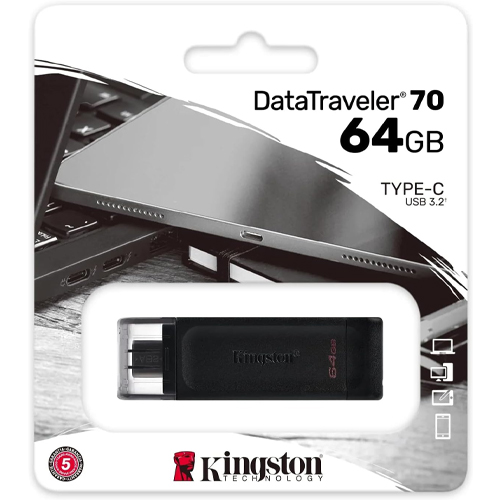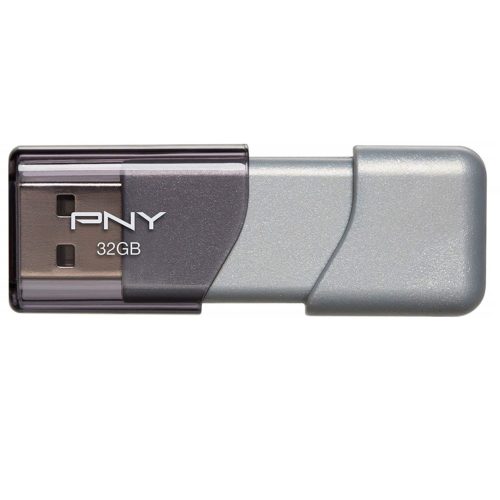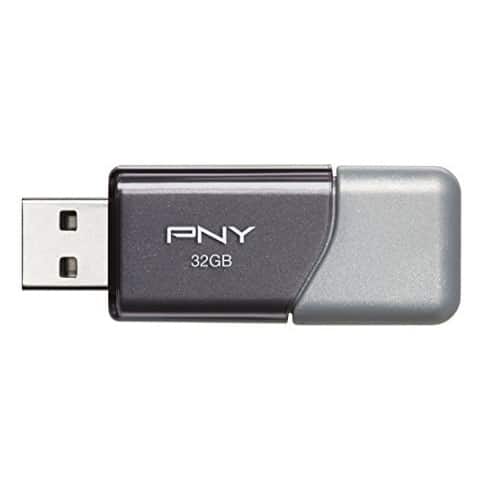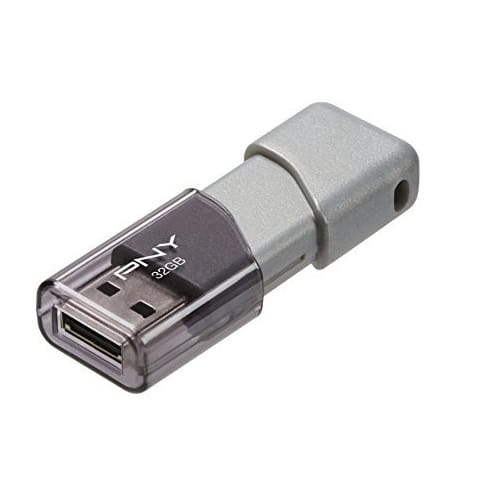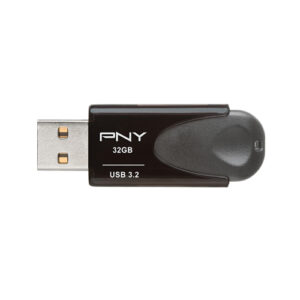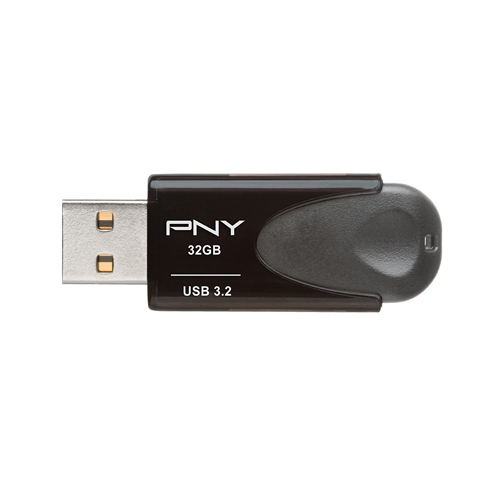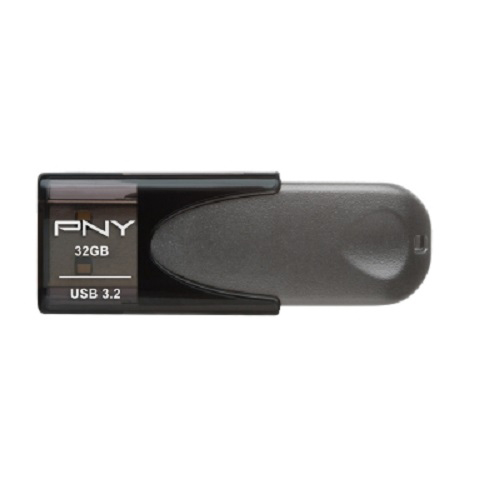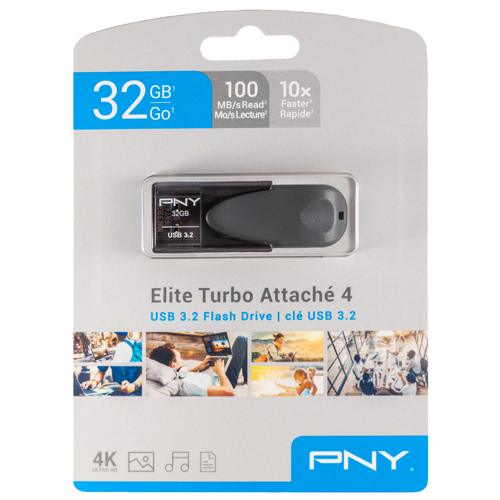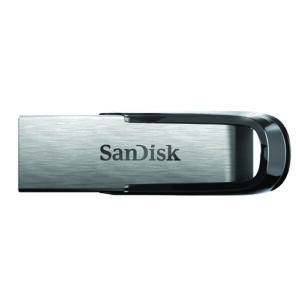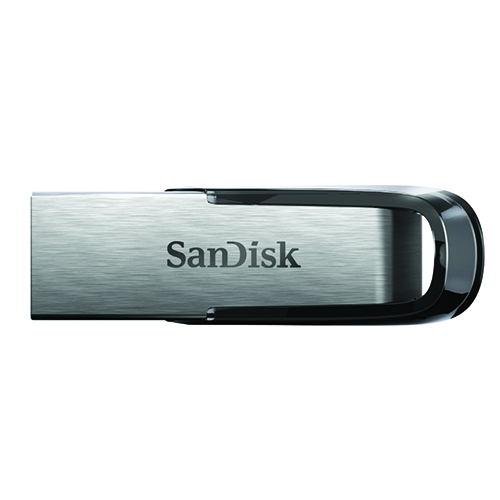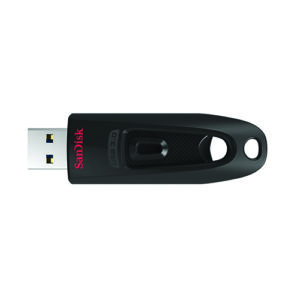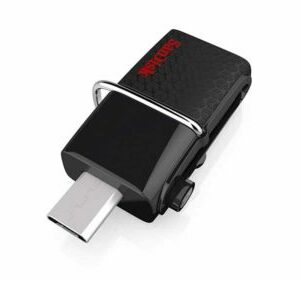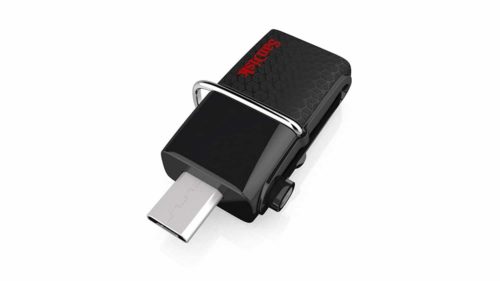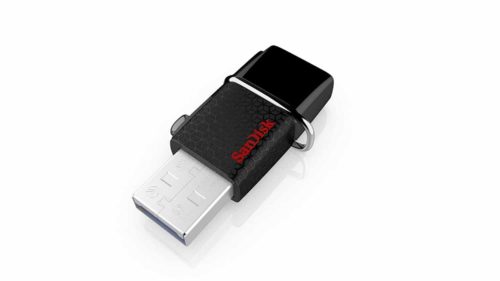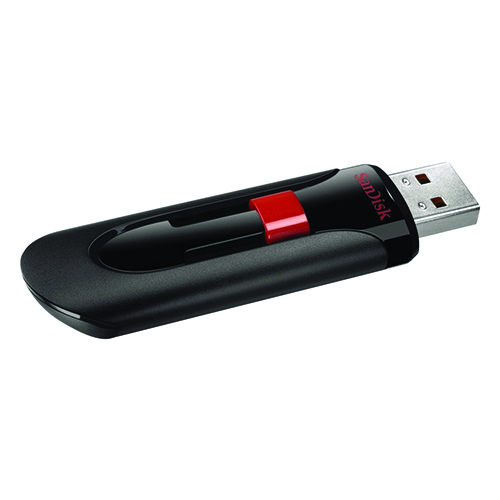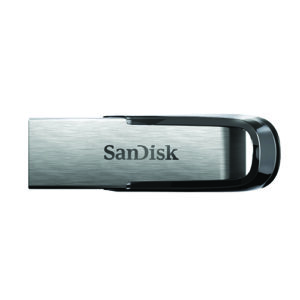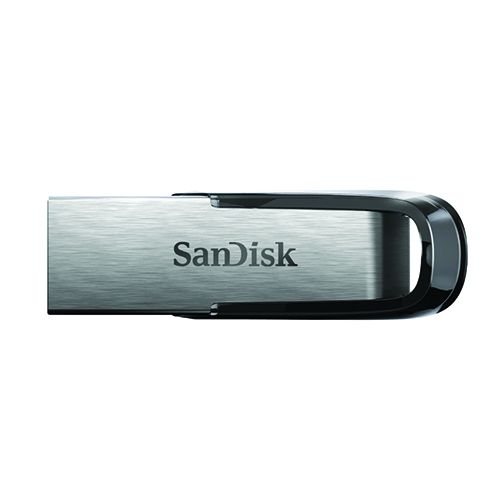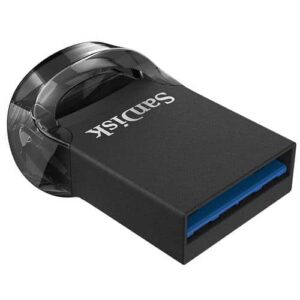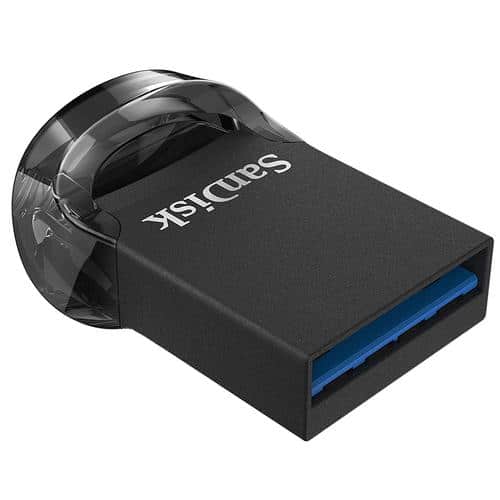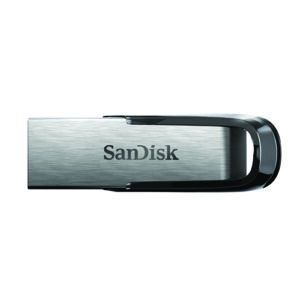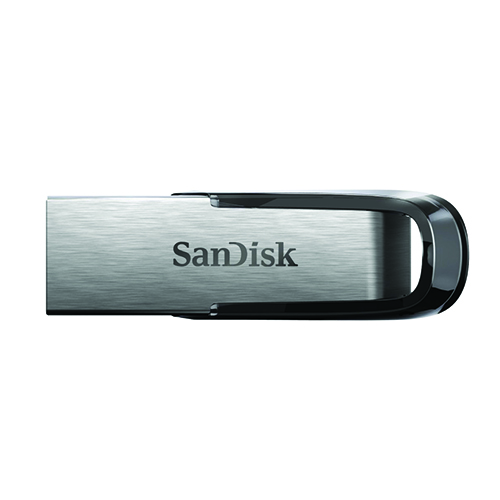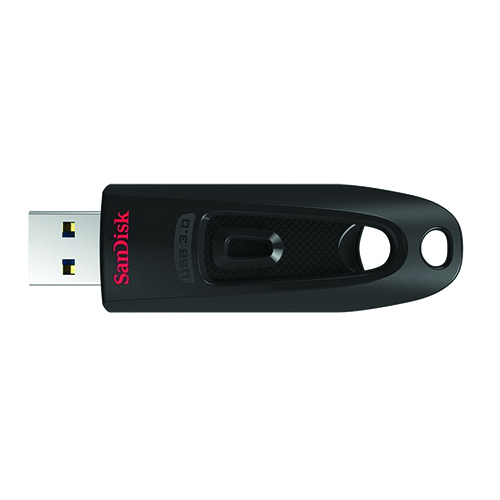USB Flash Drives
USB flash drives made their debut in 2000, marking the beginning of a new era in data storage. These versatile drives quickly gained popularity due to their robust build quality and wide range of applications. Today, flash drives have become so handy and ubiquitous that many people keep them on their keychains or in their backpacks, purses, and wallets. Whether you are looking to buy individual USB drives or make bulk purchases, it’s essential to consider some key factors to ensure you get the most value out of your investments.
Showing 1–30 of 129 resultsSorted by price: low to high
-

All USB-C Flash Drives (26)
-

All USB 3.2 (45)
-

All USB 2.0 (10)
-

All USB 3.0 & 3.1 (76)
-

USB 1GB (2)
-

2GB USB Flash Drives (Bulk & Wholesale) | Free Shipping Options (2)
-

USB 4GB (2)
-

USB 8GB (2)
-

USB 16GB (9)
-

USB 32GB (19)
-

USB 64GB (29)
-

USB 128GB (31)
-

USB 256GB (31)
-

USB 512GB (12)
-

USB 1TB (5)
-

USB Swivel & OEM (2)
-
USB Swivel & OEM
1GB-32GB Metal Style Flash Drives Blank/Non-branded – Multiple Colors (Gold, Silver, White)
These sleek flash drives are the economic choice for data usage and marketing! With a metal design that is small but sturdy, these inexpensive thumb drives are great for the data transferring you need. Attach them to a keychain or lanyard for easy access. Apply a sticker to easily keep track of what the flash drive contains. Choose from 2.0 speeds or 3.0 speeds for faster transfer on larger GBs!
The loop is also a favorite for people as you can easily attach to your keychains and carry with your keys for easy access!
Please ask us about branding options through this form!
**This product comes in bulk packaging.
(1 review)From: $3.75
(Pricing as low as $2.75) Select options This product has multiple variants. The options may be chosen on the product page -
USB Flash Drives
1GB-128GB Swivel Flash Drives Blank/Non-branded – Black
1GB-128GB Swivel Flash Drives
The Swivel Flash Drives are blank and non-branded, ready for your business logo, customization, or left unbranded. They come in every size from 1GB-128GB. This is the economic choice for data usage and marketing. With a modern, sleek design, these inexpensive thumb drives are great for the data transferring you need. You can use them for every day office use, office files, marketing material, or business conference documents.* Attach them to a keychain or lanyard for easy access. Apply a sticker to easily keep track of what the flash drive contains.
Specifications:
1GB-32GB flash drives have a USB 2.0 speed
64GB and 128GB have a USB 3.0 speed
If you need a different color, feel free to contact us by using the form linked below.
Please ask us about branding options through this form.
This product comes in bulk packaging.
*Not recommended for large scale duplication or preloading projects with either large amounts of data or imaging.
(0 reviews)From: $3.80
(Pricing as low as $2.80) Select options This product has multiple variants. The options may be chosen on the product page -
USB Flash Drives
8GB Sandisk Cruzer Blade Flash Drive (SDCZ50-008G-B35)
SanDisk 8GB Cruzer Blade Flash Drive USB 2.0. Vastly affordable option for personal, business, or bulk use.
Transfer, distribute, and backup your projects and files. Large enough for media and video storage and backups as well. The standard speed for USB 2.0 has a bandwidth or signaling speed of 60MB/s.
Specifications
- Model Number: SDCZ50-008G-B35
- USB Connection: USB Type A
- Interface: 2.0
- Dimensions: (L x W x H) 1.63 x 0.69 x 0.29 in.
- Operating Temperature: 32° – 95° F
- Material: Plastic
- Cover: No Cover
- Keyring Loop: Yes
- Indicator Light: No
**This product comes in original retail packaging ready for resale.
Model # SDCZ50-008G-B35
(17 reviews)From: $4.00
(Pricing as low as $3.00) Select options This product has multiple variants. The options may be chosen on the product page -
USB Flash Drives
16GB Sandisk Cruzer Blade Flash Drive (SDCZ50-016G-B35)
SanDisk 16GB Cruzer Blade Flash Drive
Store your photos, videos, files, and more on this SanDisk USB Blade Flash Drive.
Specifications
- Model Number: SDCZ50-016G-B35
- USB Connection: USB Type A
- Interface: 2.0
- Dimensions: (L x W x H) 1.63 x 0.69 x 0.29 in.
- Operating Temperature: 32° – 95° F
- Material: Plastic
- Cover: No Cover
- Keyring Loop: Yes
- Indicator Light: No
Estimated Number of Photos & Videos
JPG Photos: 4,310 photos
RAW Photos: 295 photos
HD Video: 210 minutes
4k Video: 40 minutes**This product comes in original retail packaging ready for resale.
Model # SDCZ50-016G-B35
(16 reviews)From: $4.20
(Pricing as low as $3.20) Select options This product has multiple variants. The options may be chosen on the product page -
USB Flash Drives
32GB Sandisk Cruzer Blade Flash Drive (SDCZ50-032G-B35)
SanDisk 32GB Cruzer Blade Flash Drive.
Specifications
- Model Number: SDCZ50-032G-B35
- USB Connection: USB Type A
- Interface: 2.0
- Dimensions: (L x W x H) 1.63 x 0.69 x 0.29 in.
- Operating Temperature: 32° – 95° F
- Material: Plastic
- Cover: No Cover
- Keyring Loop: Yes
- Indicator Light: No
Estimated Number of Photos & Videos
JPG Photos: 8,620 photos
RAW Photos: 595 photos
HD Video: 425 minutes
4k Video: 85 minutes**This product comes in original retail packaging ready for resale.
Model # SDCZ50-032G-B35
(4 reviews)From: $4.65
(Pricing as low as $3.65) Select options This product has multiple variants. The options may be chosen on the product page -
USB Flash Drives
16GB Sandisk Cruzer Glide 3.0 Flash Drive (SDCZ600-016G-B35)
SanDisk 16GB Cruzer Glide 3.0 Flash Drive – Great for faster speeds than 2.0 drives.
Specifications
- Model Number: SDCZ600-016G-B35
- USB Connection: USB Type A
- Interface: 3.0
- Dimensions: (L x W x H) 2.37 X 0.82 X 0.44 in.
- Operating Temperature: 32° – 95° F
- Material: Plastic
- Cover: Retractable
- Keyring Loop: Yes
- Indicator Light: No
Estimated Number of Photos & Videos
JPG Photos: 4,310 photos
RAW Photos: 295 photos
HD Video: 210 minutes
4k Video: 40 minutes**This product comes in original retail packaging ready for resale.
Model # SDCZ600-016G-B35
(1 review)From: $4.90
(Pricing as low as $3.95) Select options This product has multiple variants. The options may be chosen on the product page -
USB Flash Drives
32GB Sandisk Cruzer Glide 2.0 (SDCZ60-032G-B35)
Store and protect photos, videos, and important work files with the SanDisk Cruzer Glide USB Flash Drive. This USB flash drive comes with SanDisk SecureAccess software to password-protect and encrypts sensitive files while permitting access to files you want to share. Plus, the sleek retractable design keeps the USB connector safe when the drive is not in use.
Specifications
- Model Number: SDCZ60-032G-B35
- USB Connection: USB Type A
- Interface: 2.0
- Dimensions: (L x W x H) 2.34 x 0.86 x 0.33
- Operating Temperature: 32° – 95° F
- Material: Plastic
- Cover: Retractable
- Keyring Loop: Yes
- Indicator Light: No
Estimated Number of Photos & Videos
JPG Photos: 8,620 photos
RAW Photos: 595 photos
HD Video: 425 minutes
4k Video: 85 minutes**This product comes in original retail packaging ready for resale.
Model # SDCZ60-032G-B35
(6 reviews)From: $5.10
(Pricing as low as $4.10) Select options This product has multiple variants. The options may be chosen on the product page -
USB Flash Drives
16GB Sandisk Ultra 3.0 Flash Drive (SDCZ48-016G-U46)
The SanDisk Flash Drive Ultra 3.0 takes transferring files to a new level. Use this reliable drive for your files, photos, videos, and more.
Specifications
- Model Number: SDCZ48-016G-U46
- USB Connection: USB Type A
- Interface: 3.0
- Transfer Speed: Max 130MB/s
- Dimensions: (L x W x H) 2.87 X 0.87 X 0.42 in.
- Operating Temperature: 32°F – 113° F
- Material: Plastic
- Cover: Retractable
- Keyring Loop: Yes
- Indicator Light: No
Estimated Number of Photos & Videos
JPG Photos: 4,310 photos
RAW Photos: 295 photos
HD Video: 210 minutes
4k Video: 40 minutes**This product comes in original retail packaging ready for resale.
Model # SDCZ48-016G-U46
(8 reviews)From: $5.15
(Pricing as low as $4.15) Select options This product has multiple variants. The options may be chosen on the product page -
USB Flash Drives
64GB Sandisk Cruzer Blade Flash Drive (SDCZ50-064G-B35)
SanDisk 64GB Cruzer Blade Flash Drive.
Store your photos, videos, files, and more on this SanDisk USB Blade Flash Drive.
Specifications
- Model Number: SDCZ50-064G-B35
- USB Connection: USB Type A
- Interface: 2.0
- Dimensions: (L x W x H) 1.63 x 0.69 x 0.29 in.
- Operating Temperature: 32° – 95° F
- Material: Plastic
- Cover: No Cover
- Keyring Loop: Yes
- Indicator Light: No
Estimated Number of Photos & Videos
JPG Photos: 17,245 photos
RAW Photos: 1,190 photos
HD Video: 850 minutes
4k Video: 170 minutes**This product comes in original retail packaging ready for resale.
Model # SDCZ50-064G-B35
(0 reviews)From: $5.15
(Pricing as low as $4.15) Select options This product has multiple variants. The options may be chosen on the product page -
USB Flash Drives
32GB Sandisk Flash Drive Ultra Shift USB 3.2 (SDCZ410-032G-G46)
SanDisk has given the sleek Cruzer Blade flash drive a faster and updated model. This 3.2 USB has fast read speeds of up to 100MB/s and keeps the profile small and lightweight for easy transferring.
Specifications
- Model Number: SDCZ410-032G-G46
- USB Connection: USB Type A
- Interface: 3.2 Gen 1
- Transfer Speed: Max 100MB/s
- Dimensions: (L x W x H) 1.63 X 0.69 X 0.29 in.
- Operating Temperature: 32° – 113° F
- Material: Plastic
- Cover: No Cover
- Keyring Loop: Yes
- Indicator Light: No
Estimated Number of Photos & Videos
JPG Photos: 8,620 photos
RAW Photos: 595 photos
HD Video: 425 minutes
4k Video: 85 minutes**This product comes in original retail packaging ready for resale.
Model # SDCZ410-032G-G46
(0 reviews)From: $5.15
(Pricing as low as $4.30) Select options This product has multiple variants. The options may be chosen on the product page -
USB Flash Drives
64GB Kingston DataTraveler Exodia 3.2 USB Drive (DTX/64GB)
This 64GB Kingston DataTraveler Exodia is a fast and stylish option for storing all your photos, videos, and files. Enjoy fast 3.2 Gen 1 transfer speeds for quick uploading and downloading! The loop is great for attaching to a key ring or lanyard, and a cap protects the USB plug.
Specifications
- Model Number: DTX/64GB
- USB Connection: USB Type A
- Interface: 3.2 Gen 1
- Dimensions: (L x W x H) 67.3 x 21.04 x 10.14mm
- Operating Temperature: 32°F – 140° F (0°C – 60° C)
- Material: Plastic
- Cover: Removable Cap
- Keyring Loop: Yes
- Indicator Light: No
Estimated Number of Photos & Videos
JPG Photos: 17,245 photos
RAW Photos: 1,190 photos
HD Video: 850 minutes
4k Video: 170 minutes**This product comes in original retail packaging ready for resale.
Model # DTX/64GB
(0 reviews)From: $5.20
(Pricing as low as $4.35) Select options This product has multiple variants. The options may be chosen on the product page -
USB Flash Drives
32GB Ultra Curve Flash Drive (SDCZ550-032G-G46)
32GB SanDisk Ultra Curve offers a sleek design to an affordable flash drive. The 32GB SanDisk Ultra Curve Flash Drive has speeds up to 100MB/s and comes in sizes 32GB to 512GB. Perfect for all sorts of projects, schoolwork, and office work. Save money by buying from Everything But Stromboli! Have more room for your files, music, pictures, and videos. Reliable storage at lower prices. Use Flash Drives to keep your important files and data with you.
Specifications
- Model Number: SDCZ550-032G-G46
- USB Connection: USB Type A
- Interface: 3.2
- Transfer Speed: Max 100MB/s
- Dimensions: (L x W x H) 45.04 X 19.05 X 7.75 mm
- Operating Temperature: -10°C – 70° C
- Material: Plastic
- Cover: No Cover
- Keyring Loop: Yes
- Indicator Light: No
Estimated Number of Photos & Videos
JPG Photos: 8,620 photos
RAW Photos: 595 photos
HD Video: 425 minutes
4k Video: 85 minutes**This product comes in original retail packaging ready for resale. EBS return policy linked here.Model # SDCZ550-032G-G46
(0 reviews)From: $5.20
(Pricing as low as $4.20) Select options This product has multiple variants. The options may be chosen on the product page -
USB Flash Drives
64GB Kingston DataTraveler Exodia Onyx 3.2 USB Drive (DTXON/64GB)
Sleek, stylish, and compact, the Kingston DataTraveler Exodia Onyx USB flash drive packs a punch with 64GB of storage capacity. Encased in a durable matte black casing, this USB 3.2 Gen 1 drive not only looks good, but provides fast transfer speeds up to 100MB/s for effortless file transfers and storage. The capless design features a retractable connector to keep the USB plug protected when not in use. With 64GB of storage space, you’ll have plenty of room for documents, photos, music, videos, and more. Take your files on the go with confidence thanks to the durable casing that protects against bumps and drops. Whether you’re transferring files between home and office or sharing content with friends, the Kingston DataTraveler Exodia Onyx 64GB USB flash drive offers versatile portable storage in a stylish package. The attached keyring loop also allows you to conveniently attach it to your keychain or lanyard for easy portability. 64GB Kingston Exodia Onyx.
Specifications
- Model Number: DTXON/64GB
- USB Connection: USB Type A
- Interface: 3.2 Gen 1
- Dimensions: (L x W x H) 60.7 x 21 x 10.2mm
- Operating Temperature: 32°F – 140° F (0°C – 60° C)
- Material: Plastic
- Cover: Retractable
- Keyring Loop: Yes
- Indicator Light: No
Estimated Number of Photos & Videos
JPG Photos: 17,245 photos
RAW Photos: 1,190 photos
HD Video: 850 minutes
4k Video: 170 minutes**This product comes in original retail packaging ready for resale. EBS return policy linked here.Model # DTXON/64GB
(0 reviews)From: $5.20
(Pricing as low as $4.35) Select options This product has multiple variants. The options may be chosen on the product page -
USB Flash Drives
64GB Kingston DataTraveler 70 USB-C 3.2 Flash Drive (DT70/64GB)
Take your data on the go with the 64GB Kingston DataTraveler 70 USB-C flash drive. With 64GB of storage capacity, this portable drive provides ample space for photos, videos, documents, and more. It features a compact and lightweight design for effortless portability. The reversible USB-C connector allows for easy plug-and-play use with USB-C enabled laptops, tablets, smartphones, and other devices. With USB 3.2 Gen 1 speeds, the DataTraveler 70 enables fast file transfers to maximize your productivity. Whether you need extra storage for a business trip or want to take your media library anywhere, the Kingston DataTraveler 70 is a convenient pocket-sized solution. With durable build quality and reliable Kingston technology, you can trust this drive to store and transport your important files wherever you go. The 64GB Kingston DataTraveler 70 makes external storage simple and streamlined.
Specifications
- Model Number: DT70/64GB
- USB Connection: USB Type C
- Interface: 3.2 Gen 1
- Dimensions: (L x W x H) 59.00mm x 18.50mm x 9.00mm
- Operating Temperature: 32°F – 140° F (0°C – 60° C)
- Material: Plastic
- Cover: Removable Cap
- Keyring Loop: No
- Indicator Light: No
Estimated Number of Photos & Videos
JPG Photos: 17,245 photos
RAW Photos: 1,190 photos
HD Video: 850 minutes
4k Video: 170 minutes**This product comes in original retail packaging ready for resale. EBS return policy linked here.Model # DT70/64GB
(0 reviews)From: $5.20
(Pricing as low as $4.35) Select options This product has multiple variants. The options may be chosen on the product page -
USB Flash Drives
32GB Sandisk Cruzer Glide 3.0 Flash Drive (SDCZ600-032G-B35)
SanDisk 32GB Cruzer Glide 3.0 Flash Drive – Great for faster speeds than 2.0 drives.
Specifications
- Model Number: SDCZ600-032G-B35
- USB Connection: USB Type A
- Interface: 3.0
- Dimensions: (L x W x H) 2.37 X 0.82 X 0.44 in.
- Operating Temperature: 32° – 95° F
- Material: Plastic
- Cover: Retractable
- Keyring Loop: Yes
- Indicator Light: No
Estimated Number of Photos & Videos
JPG Photos: 8,620 photos
RAW Photos: 595 photos
HD Video: 425 minutes
4k Video: 85 minutes**This product comes in original retail packaging ready for resale.
Model # SDCZ600-032G-B35
(0 reviews)From: $5.25
(Pricing as low as $4.25) Select options This product has multiple variants. The options may be chosen on the product page -
USB Flash Drives
32G FD Turbo Attache 3.0 Flash Drive (P-FD32GTBOP-GE)
The PNY 32GB Attache 3.0 drive is a great choice for a reliable brand-name flash drive. With great wholesale and bulk pricing, this will save you costs.
Specifications
- Model Number: P-FD32GTBOP-GE
- USB Connection: USB Type A
- Interface: 3.0
- Operating Temperature: 32°F – 140° F (0°C – 60° C)
- Material: Plastic
- Cover: Retractable
- Keyring Loop: Yes
- Indicator Light: No
Estimated Number of Photos & Videos
JPG Photos: 8,620 photos
RAW Photos: 595 photos
HD Video: 425 minutes
4k Video: 85 minutes**This product comes in original retail packaging ready for resale. EBS return policy linked here.
Model #: P-FD32GTBOP-GE
(1 review)From: $5.30
(Pricing as low as $4.45) Select options This product has multiple variants. The options may be chosen on the product page -
USB Flash Drives
32GB FD Turbo Attache 4 USB 3.2 Flash Drive (P-FD32GTBAT4-GE)
The PNY 32GB Attache 4 USB 3.2 drive is a great choice for a reliable brand-name flash drive. With great wholesale and bulk pricing, this will save you costs.
Specifications
- Model Number: P-FD32GTBAT4-GE
- USB Connection: USB Type A
- Interface: 3.2
- Read Speed: Max 70MB/s
- Operating Temperature: 32°F – 140° F (0°C – 60° C)
- Material: Plastic
- Cover: Retractable
- Keyring Loop: Yes
- Indicator Light: Yes
Estimated Number of Photos & Videos
JPG Photos: 8,620 photos
RAW Photos: 595 photos
HD Video: 425 minutes
4k Video: 85 minutes**This product comes in original retail packaging ready for resale. EBS return policy linked here.
Model #: P-FD32GTBAT4-GE
(0 reviews)From: $5.30
(Pricing as low as $4.30) Select options This product has multiple variants. The options may be chosen on the product page -
USB Flash Drives
16GB Sandisk Ultra Flair 3.0 Flash Drive (SDCZ73-016G-G46)
This SanDisk USB 3.0 flash drive is sleek and stylish, with fast transfer speeds.
Specifications
- Model Number: SDCZ73-016G-G46
- USB Connection: USB Type A
- Interface: 3.0
- Transfer Speed: Max 130MB/s
- Dimensions: (L x W x H) 1.67 X 0.52 X 0.26 in.
- Operating Temperature: 32°F – 95° F
- Material: Metal Casing
- Cover: No Cover
- Keyring Loop: Yes
- Indicator Light: No
Estimated Number of Photos & Videos
JPG Photos: 4,310 photos
RAW Photos: 295 photos
HD Video: 210 minutes
4k Video: 40 minutes**This product comes in original retail packaging ready for resale.
Model # SDCZ73-016G-G46
(6 reviews)From: $5.45
(Pricing as low as $4.45) Select options This product has multiple variants. The options may be chosen on the product page -
USB Flash Drives
32GB Sandisk Ultra 3.0 Flash Drive (SDCZ48-032G-U46)
This SanDisk USB 3.0 flash drive is sleek and stylish, with fast transfer speeds.
Specifications
- Model Number: SDCZ48-032G-U46
- USB Connection: USB Type A
- Interface: 3.0
- Transfer Speed: Max 130MB/s
- Dimensions: (L x W x H) 2.87 X 0.87 X 0.42 in.
- Operating Temperature: 32°F – 113° F
- Material: Plastic
- Cover: Retractable
- Keyring Loop: Yes
- Indicator Light: No
Estimated Number of Photos & Videos
JPG Photos: 8,620 photos
RAW Photos: 595 photos
HD Video: 425 minutes
4k Video: 85 minutes**This product comes in original retail packaging ready for resale.
Model # SDCZ48-032G-U46
(4 reviews)From: $5.45
(Pricing as low as $4.45) Select options This product has multiple variants. The options may be chosen on the product page -
USB Flash Drives
16GB SanDisk OTG Dual Flash Drive MicroUSB and USB-A 3.0 (SDDD2-016G-GAM46)
This 16GB SanDisk OTG Dual Flash Drive 3.0 is the go-to flash drive for On-The-Go (OTG) devices. You can easily transfer files between smartphones, tablets and computers with Micro-USB Connectors and USB ports.
Specifications
- Model Number: SDDD2-016G-G46
- USB Connection: USB Type A & Micro-USB
- Interface: 3.0
- Read Speed: Max 150MB/s
- Dimensions: (L x W x H) 1.4 x 0.78 x 0.43 in.
- Operating Temperature: 32°F – 113° F (0°C – 45° C)
- Material: Plastic
- Cover: Retractable
- Keyring Loop: Yes
- Indicator Light: No
Estimated Number of Photos & Videos
JPG Photos: 4,310 photos
RAW Photos: 295 photos
HD Video: 210 minutes
4k Video: 40 minutes**This product comes in original retail packaging ready for resale.
Product Model: SDDD2-016G-G46
(1 review)From: $5.45
(Pricing as low as $4.60) Select options This product has multiple variants. The options may be chosen on the product page -
USB Flash Drives
64GB Sandisk Cruzer Glide Flash Drive (SDCZ60-064G-B35)
Specifications
- Model Number: SDCZ60-064G-B35
- USB Connection: USB Type A
- Interface: 2.0
- Dimensions: (L x W x H) 2.34 x 0.86 x 0.33
- Operating Temperature: 32° – 95° F
- Material: Plastic
- Cover: Retractable
- Keyring Loop: Yes
- Indicator Light: No
Estimated Number of Photos & Videos
JPG Photos: 17,245 photos
RAW Photos: 1,190 photos
HD Video: 850 minutes
4k Video: 170 minutes**This product comes in original retail packaging ready for resale.
Model # SDCZ60-064G-B35
(1 review)From: $5.50
(Pricing as low as $4.50) Select options This product has multiple variants. The options may be chosen on the product page -
USB Flash Drives
64GB Sandisk Cruzer Glide 3.0 Flash Drive (SDCZ600-064G-B35)
SanDisk 64GB Cruzer Glide 3.0 Flash Drive – Great for faster speeds than 2.0 drives.
Specifications
- Model Number: SDCZ600-064G-B35
- USB Connection: USB Type A
- Interface: 3.0
- Dimensions: (L x W x H) 2.37 X 0.82 X 0.44 in.
- Operating Temperature: 32° – 95° F
- Material: Plastic
- Cover: Retractable
- Keyring Loop: Yes
- Indicator Light: No
Estimated Number of Photos & Videos
JPG Photos: 17,245 photos
RAW Photos: 1,190 photos
HD Video: 850 minutes
4k Video: 170 minutes**This product comes in original retail packaging ready for resale.
Model # SDCZ600-064G-B35
(0 reviews)From: $5.65
(Pricing as low as $4.65) Select options This product has multiple variants. The options may be chosen on the product page -
USB Flash Drives
64GB Ultra Curve Flash Drive (SDCZ550-064G-G46)
64GB SanDisk Ultra Curve offers a sleek design to an affordable flash drive. The 64GB SanDisk Ultra Curve Flash Drive has speeds up to 100MB/s and comes in sizes 32GB to 512GB. Perfect for all sorts of projects, schoolwork, and office work. Save money by buying from Everything But Stromboli! Have more room for your files, music, pictures, and videos. Reliable storage at lower prices. Use Flash Drives to keep your important files and data with you.
Specifications
- Model Number: SDCZ550-064G-G46
- USB Connection: USB Type A
- Interface: 3.2
- Transfer Speed: Max 100MB/s
- Dimensions: (L x W x H) 45.04 X 19.05 X 7.75 mm
- Operating Temperature: -10°C – 70° C
- Material: Plastic
- Cover: No Cover
- Keyring Loop: Yes
- Indicator Light: No
Estimated Number of Photos & Videos
JPG Photos: 17,245 photos
RAW Photos: 1,190 photos
HD Video: 850 minutes
4k Video: 170 minutes**This product comes in original retail packaging ready for resale. EBS return policy linked here.Model # SDCZ550-064G-G46
(0 reviews)From: $5.65
(Pricing as low as $4.65) Select options This product has multiple variants. The options may be chosen on the product page -
USB Flash Drives
32GB Sandisk Ultra Flair 3.0 Flash Drive (SDCZ73-032G-G46)
The SanDisk Ultra Flair USB 3.0 Flash Drive moves your files fast. Spend less time waiting to transfer files and enjoy high-speed USB 3.0 performance of up to 150MB/s. Its durable and sleek metal casing is tough enough to handle knocks with style. And with password protection, you can rest assured your private files stay private. Secure your files in style with the SanDisk Ultra Flair USB 3.0 Flash Drive.
Specifications
- Model Number: SDCZ73-032G-G46
- USB Connection: USB Type A
- Interface: 3.0
- Transfer Speed: Max 150MB/s
- Dimensions: (L x W x H) 1.67 X 0.52 X 0.26 in.
- Operating Temperature: 32°F – 95° F
- Material: Metal Casing
- Cover: No Cover
- Keyring Loop: Yes
- Indicator Light: No
Estimated Number of Photos & Videos
JPG Photos: 8,620 photos
RAW Photos: 595 photos
HD Video: 425 minutes
4k Video: 85 minutes**This product comes in original retail packaging ready for resale.
Model #SDCZ73-032G-G46
(3 reviews)From: $5.75
(Pricing as low as $4.75) Select options This product has multiple variants. The options may be chosen on the product page -
USB Flash Drives
64GB Sandisk Flash Drive Ultra Shift USB 3.2 (SDCZ410-064G-G46)
SanDisk has given the sleek Cruzer Blade flash drive a faster and updated model. This 3.2 USB has fast read speeds of up to 100MB/s and keeps the profile small and lightweight for easy transferring.
Specifications
- Model Number: SDCZ410-064G-G46
- USB Connection: USB Type A
- Interface: 3.2 Gen 1
- Transfer Speed: Max 100MB/s
- Dimensions: (L x W x H) 1.63 X 0.69 X 0.29 in.
- Operating Temperature: 32° – 113° F
- Material: Plastic
- Cover: No Cover
- Keyring Loop: Yes
- Indicator Light: No
Estimated Number of Photos & Videos
JPG Photos: 17,245 photos
RAW Photos: 1,190 photos
HD Video: 850 minutes
4k Video: 170 minutes**This product comes in original retail packaging ready for resale.
Model # SDCZ410-064G-G46
(0 reviews)From: $5.85
(Pricing as low as $5.00) Select options This product has multiple variants. The options may be chosen on the product page -
USB Flash Drives
16GB Sandisk Ultra Fit 3.2 Flash Drive (SDCZ430-016G-G46)
Grab this 16GB Flash Drive Ultra Fit for a low-profile, tiny flash drive that will not take up much space in your USB Port. With 3.2 transfer speeds, this reliable drive will be a great addition for your laptop/computer.Specifications
- Model Number: SDCZ430-016G-G46
- USB Connection: USB Type A
- Interface: 3.2 Gen 1
- Transfer Speed: Max 130MB/s
- Dimensions: (L x W x H) 1.17 X 0.56 X 0.20 in.
- Operating Temperature: 32°F – 95° F
- Material: Plastic
- Cover: No Cover
- Keyring Loop: Yes
- Indicator Light: No
Estimated Number of Photos & Videos
JPG Photos: 4,310 photos
RAW Photos: 295 photos
HD Video: 210 minutes
4k Video: 40 minutes**This product comes in original retail packaging ready for resale.Model #SDCZ430-016G-G46(1 review)From: $6.05
(Pricing as low as $5.20) Select options This product has multiple variants. The options may be chosen on the product page -
USB Flash Drives
64GB Sandisk Ultra Flair 3.0 Flash Drive (SDCZ73-064G-G46)
Specifications
- Model Number: SDCZ73-064G-G46
- USB Connection: USB Type A
- Interface: 3.0
- Transfer Speed: Max 150MB/s
- Dimensions: (L x W x H) 1.67 X 0.52 X 0.26 in.
- Operating Temperature: 32°F – 95° F
- Material: Metal Casing
- Cover: No Cover
- Keyring Loop: Yes
- Indicator Light: No
Estimated Number of Photos & Videos
JPG Photos: 17,245 photos
RAW Photos: 1,190 photos
HD Video: 850 minutes
4k Video: 170 minutes**This product comes in original retail packaging ready for resale.
Model # SDCZ73-064G-G46
(3 reviews)From: $6.15
(Pricing as low as $5.15) Select options This product has multiple variants. The options may be chosen on the product page -
USB Flash Drives
64GB Sandisk Ultra 3.0 Flash Drive (SDCZ48-064G-U46)
The SanDisk Flash Drive Ultra 3.0 is the perfect economical choice for a 3.0 USB. Great speeds at a great price.
Specifications
- Model Number: SDCZ48-064G-U46
- USB Connection: USB Type A
- Interface: 3.0
- Transfer Speed: Max 130MB/s
- Dimensions: (L x W x H) 2.87 X 0.87 X 0.42 in.
- Operating Temperature: 32°F – 113° F
- Material: Plastic
- Cover: Retractable
- Keyring Loop: Yes
- Indicator Light: No
Estimated Number of Photos & Videos
JPG Photos: 17,245 photos
RAW Photos: 1,190 photos
HD Video: 850 minutes
4k Video: 170 minutes**This product comes in original retail packaging ready for resale.
Model # SDCZ48-064G-U46
(2 reviews)From: $6.15
(Pricing as low as $5.15) Select options This product has multiple variants. The options may be chosen on the product page -
USB Flash Drives
64GB FD Turbo Attache 4 USB 3.2 Flash Drive (P-FD64GTBAT4-GE)
The PNY 64GB Attache 4 USB 3.2 drive is a great choice for a reliable brand-name flash drive. With great wholesale and bulk pricing, this will save you costs.
Specifications
- Model Number: P-FD64GTBAT4-GE
- USB Connection: USB Type A
- Interface: 3.2
- Read Speed: Max 70MB/s
- Operating Temperature: 32°F – 140° F (0°C – 60° C)
- Material: Plastic
- Cover: Retractable
- Keyring Loop: Yes
- Indicator Light: Yes
Estimated Number of Photos & Videos
JPG Photos: 17,245 photos
RAW Photos: 1,190 photos
HD Video: 850 minutes
4k Video: 170 minutes**This product comes in original retail packaging ready for resale. EBS return policy linked here.
Model #: P-FD64GTBAT4-GE
(0 reviews)From: $6.15
(Pricing as low as $5.15) Select options This product has multiple variants. The options may be chosen on the product page -
USB Flash Drives
32GB Sandisk Ultra Fit 3.2 Flash Drive (SDCZ430-032G-G46)
Grab this low profile 32GB Ultra Fit 3.2 Flash Drive.
Specifications
- Model Number: SDCZ430-032G-G46
- USB Connection: USB Type A
- Interface: 3.2 Gen 1
- Transfer Speed: Max 130MB/s
- Dimensions: (L x W x H) 1.17 X 0.56 X 0.20 in.
- Operating Temperature: 32°F – 95° F
- Material: Plastic
- Cover: No Cover
- Keyring Loop: Yes
- Indicator Light: No
Estimated Number of Photos & Videos
JPG Photos: 8,620 photos
RAW Photos: 595 photos
HD Video: 425 minutes
4k Video: 85 minutes**This product comes in original retail packaging ready for resale.
Model # SDCZ430-032G-G46
(0 reviews)From: $6.25
(Pricing as low as $5.25) Select options This product has multiple variants. The options may be chosen on the product page
The Ultimate Guide to USB Flash Drives
Introduction to USB Flash Drives
A USB (Universal Serial Bus) flash drive is a portable, plug-and-play storage device that utilizes flash memory technology to store and transfer digital data. These compact devices—also known as USB drives, thumb drives, pen drives, jump drives, or key drives—have revolutionized the way we store, backup, and transfer files between computers and other electronic devices.
Flash drives are characterized by their small size (often small enough to attach to a keychain), lightweight construction, and the absence of moving parts. This makes them significantly more durable than traditional storage devices like hard disk drives. The flash memory technology allows these devices to retain data even when not connected to a power source.
Since their introduction to the consumer market in the early 2000s, USB flash drives have become an indispensable tool for students, professionals, and everyday users. Despite the rise of cloud storage services, the tangible nature and offline accessibility of USB drives continue to make them relevant and valuable storage solutions.
The History and Evolution of USB Flash Drives
Origins and Early Development
The story of USB flash drives begins with the invention of flash memory by Dr. Fujio Masuoka at Toshiba in the early 1980s. Flash memory’s key attributes—non-volatility, durability, and compactness—set the stage for portable storage technology.
The first commercially available USB flash drives appeared around 1999-2000, with several companies claiming to be the first to market, including:
- Trek Technology (Singapore) with their “ThumbDrive”
- IBM with their “DiskOnKey” (developed by M-Systems)
- Netac Technology (China)
These early drives had modest storage capacities, typically ranging from 8 to 256 megabytes, and connected via the USB 1.0/1.1 interface with maximum transfer speeds of just 12 Mbps.
Key Milestones in USB Flash Drive Development
- 2000-2002: First commercial USB flash drives hit the market
- 2003-2004: USB 2.0 drives appear, offering speeds up to 480 Mbps
- 2005-2008: Capacities expand to several gigabytes, prices begin to drop
- 2010: USB 3.0 drives emerge with theoretical speeds up to 5 Gbps
- 2013: Kingston releases a flash drive with 1TB capacity
- 2015: First USB 3.1 Type-C flash drives appear with read/write speeds around 530 MB/s
- 2017-2018: 2TB flash drives become commercially available
- 2020-2024: Advanced security features become standard, including biometric authentication
- 2025: 4TB flash drives now in production with USB4 compatibility and transfer speeds exceeding 2000 MB/s
How USB Flash Drives Work
Flash Memory Technology
USB flash drives utilize NAND flash memory technology, a type of non-volatile storage that retains data even when power is disconnected. Unlike conventional hard drives with moving mechanical parts, flash drives have no moving components, making them more resistant to physical shock and damage.
The memory cells in a flash drive are organized in a grid pattern of rows and columns with two transistors at each intersection forming a memory cell. These cells can store one or more bits of information through electric charges. Modern flash drives use various types of memory cell technology:
- SLC (Single-Level Cell): Stores one bit per cell; fastest, most durable, and most expensive
- MLC (Multi-Level Cell): Stores two bits per cell; good balance of performance and cost
- TLC (Triple-Level Cell): Stores three bits per cell; higher capacity at lower cost but slower and less durable
- QLC (Quad-Level Cell): Stores four bits per cell; highest capacity but lowest performance and durability
- 3D NAND: Stacks memory cells vertically in multiple layers, significantly increasing storage density
Each memory cell has a finite number of program-erase cycles before failure, with SLC memory supporting up to 100,000 cycles while QLC may only support around 1,000 cycles. To extend lifespan, flash drives implement wear-leveling algorithms that distribute write operations evenly across all memory cells.
Controller Chips and Architecture
At the heart of every USB flash drive is a controller chip that manages data flow between the USB interface and the flash memory. The controller:
- Manages read/write operations and error correction
- Implements wear-leveling algorithms
- Handles bad block management
- Controls encryption (if available)
- Manages USB communication protocols
Higher-quality flash drives feature more sophisticated controllers with better firmware, resulting in faster speeds, improved reliability, and extended lifespan.
USB Interface Standards Evolution
USB flash drives connect to devices via the Universal Serial Bus (USB) interface, which has evolved through several generations:
| USB Version | Introduction Year | Max Theoretical Speed | Common Consumer Speed |
| USB 1.0/1.1 | 1996 | 12 Mbps | 1-2 MB/s |
| USB 2.0 | 2000 | 480 Mbps | 25-35 MB/s |
| USB 3.0/3.1 Gen 1 | 2008 | 5 Gbps | 100-300 MB/s |
| USB 3.1 Gen 2 | 2013 | 10 Gbps | 300-900 MB/s |
| USB 3.2 Gen 2×2 | 2017 | 20 Gbps | 1500-1900 MB/s |
| USB4 | 2019 | 40 Gbps | 2000-3000 MB/s |
Higher USB versions are backward compatible with lower versions, though the transfer speed will be limited to the lower standard’s capabilities. It’s important to note that both the flash drive and the computer port must support the same USB standard to achieve the maximum potential speed.
USB Connector Types
USB connectors have evolved alongside the interface standards:
- USB Type-A: The standard rectangular connector found on most computers and traditional flash drives
- USB Type-B: Square-ish connector typically used for printers and scanners
- USB Mini/Micro: Smaller connectors commonly found on older mobile devices
- USB Type-C: The newest, reversible connector increasingly common on modern devices, offering faster speeds and more functionality
Modern flash drives often feature dual connectors (Type-A and Type-C) or retractable designs to accommodate different devices. USB-C drives are particularly versatile as they can connect directly to most new laptops, tablets, and smartphones without adapters.
Storage Capacities and Memory Technology
Current Storage Tiers
USB flash drives are available in a wide range of storage capacities:
- Entry-level (8GB-32GB): Suitable for documents, presentations, and small media files
- Mid-range (64GB-128GB): Ideal for larger collections of documents, photos, and some video files
- High-capacity (256GB-512GB): Perfect for media libraries, software installations, and backups
- Premium (1TB-2TB): Used for large-scale data transfers, system backups, and professional applications
- Enterprise (2TB-4TB+): Specialized drives for data-intensive professional environments
As technology advances, the price per gigabyte continues to decrease while maximum capacities increase. Current consumer models typically range from 16GB to 1TB, while enterprise and professional models can reach 4TB or more.
Memory Quality and Performance Implications
The type of flash memory used in a drive significantly impacts both performance and longevity:
| Memory Type | Bits per Cell | P/E Cycles | Performance | Use Case |
| SLC | 1 | 50,000-100,000 | Highest | Enterprise, military, industrial |
| MLC | 2 | 3,000-10,000 | High | Professional, performance-focused |
| TLC | 3 | 1,000-3,000 | Medium | Consumer, general use |
| QLC | 4 | 500-1,000 | Lower | Budget, storage-focused |
As a general rule, drives with higher quality memory will offer better performance, reliability, and longevity, but at a higher cost per gigabyte.
Advanced Memory Technologies
Recent advances in flash memory technology have improved performance and capacity:
- 3D NAND Technology: Stacks memory cells vertically in multiple layers (64, 96, or even 176 layers), dramatically increasing storage density and improving performance
- BiCS FLASH: Toshiba/Western Digital’s implementation of 3D NAND that offers higher speeds and greater reliability
- V-NAND: Samsung’s vertical 3D NAND implementation with enhanced durability
- Dynamic SLC Caching: Treats a portion of TLC/QLC memory as SLC for improved write performance
Performance Factors and Benchmarks
Transfer Speed Components
Several factors determine a USB flash drive’s actual performance:
Read and Write Speeds
- Sequential Read: The rate at which large files can be read from the drive (most commonly advertised)
- Sequential Write: The rate at which large files can be written to the drive (typically slower than read speeds)
- Random Read/Write: Performance when accessing small files scattered across the drive (often significantly slower)
Interface Bottlenecks
The theoretical maximum speeds of various USB standards serve as upper limits, but actual performance is affected by:
- Controller quality
- Memory type and configuration
- Internal bus architecture
- Host computer USB controller implementation
- Operating system and drivers
Real-World Performance vs. Marketing Claims
Marketing materials often cite theoretical maximum speeds that may not be achievable in practice. For example, a drive advertised as “up to 300 MB/s” might achieve those speeds only under ideal conditions with large sequential file transfers.
Real-world performance typically falls below advertised maximums due to:
- File system overhead
- Mixed file sizes
- File fragmentation
- Thermal throttling under heavy loads
- Controller limitations
Top-Performing USB Drives in 2025
Based on recent benchmarks, the fastest consumer USB flash drives in 2025 include:
- Kingston DataTraveler Max (USB-C): Achieves up to 1000 MB/s read and 900 MB/s write speeds using USB 3.2 Gen 2, available in capacities up to 1TB
- SanDisk Extreme PRO: Delivers up to 420 MB/s read and 380 MB/s write speeds, with rugged design and capacities up to 2TB
- Samsung MUF-256AB: Combining SSD and flash drive features with read speeds up to 540 MB/s and write speeds up to 470 MB/s
- Buffalo SSD-PUT: Offers SSD-like performance in a flash drive form factor with capacities up to 2TB
Professional Benchmark Standards
When evaluating drive performance, professional reviewers use standardized testing tools like:
- CrystalDiskMark: Measures sequential and random read/write speeds
- ATTO Disk Benchmark: Tests performance across various file sizes
- AS SSD Benchmark: Focuses on performance with incompressible data
- PCMark Storage Tests: Simulates real-world usage scenarios
Common Uses for USB Flash Drives
Data Storage and Transfer
The most common use is storing and transferring digital files:
- Documents, spreadsheets, presentations
- Photos, videos, and audio files
- Software installers and portable applications
- System recovery tools and boot media
Flash drives excel at quick file transfers between computers, especially in environments where network transfers are impractical, slow, or unavailable.
Backup Solutions
Many individuals and small businesses use flash drives for data backup:
- Personal document backups
- Photo and media backups
- Small business financial and client data backups
- System configuration backups
While not as robust as dedicated backup solutions, flash drives provide an accessible option for quick, portable backups. Advanced backup software can be configured to automatically sync important files to a connected flash drive.
Bootable Media
Flash drives can be configured as bootable media for:
- Operating system installation (Windows, Linux, macOS)
- System recovery tools
- Live operating systems (portable OS that runs directly from the drive)
- Diagnostic and repair utilities
This functionality makes them invaluable for IT professionals, system administrators, and tech enthusiasts. Creating bootable media requires specific software tools and processes depending on the intended purpose.
Specialized Applications
Beyond standard storage, flash drives serve specialized purposes:
- Security keys: For two-factor authentication or encrypted access
- Portable applications: Software that runs directly from the drive without installation
- Digital portfolios: For designers, photographers, and creative professionals
- Electronic distribution: For software, media, and promotional materials
- Gaming and console storage: Expanding storage for consoles like Xbox or PlayStation
- Automotive use: Music and media storage for vehicle entertainment systems
- Medical and healthcare data: Portable patient records or diagnostic information
Security Considerations and Features
Data Security Risks
USB flash drives present several security considerations:
- Physical loss: Their small size makes them easy to lose or misplace
- Theft: Drives may contain sensitive data that can be stolen
- Malware transmission: Drives can spread viruses between computers
- Data breach: Unauthorized access to confidential information
- Corporate espionage: Targeted data theft via flash drives
Encryption Options
To protect sensitive data, many flash drives offer encryption features:
- Software encryption: Password protection provided by companion software
- Hardware encryption: Dedicated encryption processors built into the drive
- FIPS-validated: Drives that meet Federal Information Processing Standards, offering government-grade security
- Self-encrypting drives (SEDs): Automatically encrypt all data written to the drive
AES 256-bit encryption is considered the gold standard for secure flash drives, with options ranging from basic password protection to military-grade security implementations.
Advanced Security Features
Modern secure flash drives incorporate additional protection measures:
- Biometric authentication: Fingerprint readers integrated into the drive housing
- PIN pad access: Physical keypads for entering security codes
- Remote management: Enterprise solutions with centralized control
- Self-destruct mechanisms: Data wiping after failed authentication attempts
- Automatic timeout locking: Re-locks drive after periods of inactivity
- Read-only mode: Prevents writing to protect against malware
Physical Security Features
Some secure flash drives include physical security features:
- Tamper-evident seals
- Rugged, waterproof casings
- Epoxy-filled hardware to prevent physical attacks
- Crush-resistant construction
- PIN pad entry to eliminate keylogger risks
Data Protection Best Practices
When using flash drives for sensitive information:
- Always use encryption for confidential data
- Enable password protection when available
- Keep physical control of the drive
- Properly eject the drive before disconnecting to prevent data corruption
- Regularly backup important files stored on flash drives
- Consider using drives with automatic cloud backup features
- Label drives appropriately (without revealing sensitive contents)
- Update security software and firmware regularly
Durability and Environmental Resistance
Physical Durability Factors
Flash drives can be designed with various levels of durability:
- Standard consumer models: Basic plastic construction suitable for everyday use
- Rugged models: Reinforced construction for harsher environments
- Military-grade: Designed to withstand extreme conditions and rough handling
- Industrial-grade: Built for reliability in manufacturing and field environments
Key durability specifications to consider include:
- Shock resistance: Ability to withstand drops (measured in G-forces)
- Crush resistance: Weight tolerance without damage
- Connector durability: Number of insertion cycles supported
Environmental Resistance Ratings
Premium flash drives often feature protection against environmental factors:
- Water resistance: IPX4 to IPX8 ratings (higher numbers indicate better protection)
- Dust resistance: IP5X to IP6X ratings for dust ingress protection
- Temperature tolerance: Operating and storage temperature ranges
- Humidity resistance: Ability to function in high-humidity environments
- UV resistance: Protection against sun damage and discoloration
Specialized Rugged Drive Features
For extreme environments, specialized drives offer enhanced protection:
- Hermetically sealed casing: Complete protection against water and dust
- Integrated caps or connector shields: Protection when not in use
- Reinforced USB connectors: Strengthened to withstand frequent connecting/disconnecting
- Metal alloy construction: Typically aluminum, titanium, or zinc alloys for maximum durability
- Lanyard attachments: Secure carrying options to prevent drops
Extended Lifespan Technologies
Specialized flash drives incorporate technologies to extend their operational lifespan:
- Advanced wear-leveling algorithms: More sophisticated distribution of write cycles
- Error correction code (ECC): Detects and corrects data corruption
- Bad block management: Automatically identifies and avoids failing memory cells
- Overprovisioning: Reserved space that replaces failing cells to maintain performance
Choosing the Right USB Flash Drive
Factors to Consider
When selecting a USB flash drive, consider:
Storage Capacity
- Determine how much data you need to store
- Account for future needs by choosing a slightly larger capacity
- Consider file types you’ll be storing (documents vs. media files)
- Factor in operating system overhead and formatting efficiency
Speed Requirements
- USB 2.0 vs. USB 3.0/3.1/3.2/USB4 interfaces
- Read/write speeds appropriate for your use case
- Random access performance for application use
- Consider your computer’s USB port specifications
Durability
- Water resistance or waterproofing
- Shock resistance
- Temperature tolerance
- Casing material (metal vs. plastic)
- Expected usage environment (office vs. field work)
Security Features
- Encryption capabilities
- Password protection
- Physical security features
- Compliance with organizational security policies
- Biometric options if needed
Compatibility
- Operating system compatibility (Windows, macOS, Linux)
- Device compatibility (computers, tablets, smartphones, smart TVs)
- File system compatibility (FAT32, exFAT, NTFS)
- Specialized device compatibility (car stereos, game consoles, medical equipment)
Brand Reputation
- Warranty terms
- Customer support availability
- History of reliability
- Quality control standards
Additional Features
- Design (cap vs. retractable, keychain attachment)
- LED activity indicator
- Special functions (write-protection switch, backup button)
- Software inclusions
USB Drive Categories and Use Cases
Different types of USB drives are optimized for specific uses:
Standard Drives
- Everyday file storage and transfer
- General consumer use
- Office environments
Performance Drives
- Large file transfers
- Video and photography work
- Frequent use with large datasets
Secure Drives
- Sensitive business documents
- Personal financial information
- Medical records
- Intellectual property
Rugged Drives
- Outdoor environments
- Industrial settings
- Travel and field work
- Extreme conditions
Specialty Drives
- Multi-interface (USB-A/USB-C/Lightning)
- Micro drives (ultra-compact)
- Gaming-optimized
- Multimedia-focused
Popular Brands and Manufacturers
Several manufacturers have established reputations for quality flash drives:
- SanDisk: Known for reliability and a wide product range
- Kingston: Offers excellent value with good performance
- Samsung: Features advanced technology with high transfer speeds
- Corsair: Popular among enthusiasts for performance flash drives
- PNY: Provides budget-friendly options with good reliability
- Transcend: Known for durable, specialized flash drives
- Lexar: Offers high-performance professional options
- Verbatim: Features antimicrobial protection and reliable performance
- ADATA: Known for innovative designs and good value
- Patriot: Performance-focused drives for enthusiasts
File Systems and Formatting
Common File Systems for USB Drives
USB flash drives can be formatted with various file systems, each with different capabilities:
FAT32
- Compatibility: Excellent (works with virtually all devices)
- Max file size: 4GB
- Max volume size: 32GB (theoretically 2TB)
- Best for: Maximum compatibility across devices
exFAT
- Compatibility: Good (Windows, macOS, most modern devices)
- Max file size: Virtually unlimited (128PB theoretical)
- Max volume size: Virtually unlimited (128PB theoretical)
- Best for: Large files across multiple platforms
NTFS
- Compatibility: Windows native, read-only on macOS (without additional software)
- Max file size: 16TB (with 4KB clusters)
- Max volume size: 256TB
- Best for: Windows-only environments, journaling, permissions
HFS+/APFS
- Compatibility: macOS native, generally not readable by Windows
- Max file size: 8EB (exabytes)
- Max volume size: 8EB
- Best for: macOS-only environments
UDF
- Compatibility: Good cross-platform support
- Max file size: Up to 16EB
- Max volume size: Up to 16EB
- Best for: Cross-platform use with large files
Formatting Best Practices
To optimize a flash drive’s performance and compatibility:
- Choose the appropriate file system:
- For general use across multiple devices: exFAT
- For maximum compatibility with older devices: FAT32
- For Windows-only with security features: NTFS
- For macOS-only: APFS
- Use proper allocation unit size:
- Smaller allocation units (4KB) for many small files
- Larger allocation units (32KB or 64KB) for fewer, larger files
- Consider drive partitioning:
- Create multiple partitions with different file systems for different purposes
- Set up a secure encrypted partition alongside a general-use partition
- Format using operating system tools:
- Windows: Disk Management or File Explorer
- macOS: Disk Utility
- Linux: GParted or command-line tools
Customization and Branding
Promotional Uses
Customized flash drives serve as effective promotional items:
- Corporate giveaways at trade shows and conferences
- Customer appreciation gifts
- Employee recognition and onboarding kits
- Educational resources for students
Design Options
Customization options typically include:
- Printed logos and branding
- Custom colors and materials
- Unique shapes related to company products or services
- Specialized packaging for gifting
- Preloaded content like catalogs, brochures, or presentations
Business Applications
Businesses utilize branded flash drives for:
- Marketing campaigns and lead generation
- Sales presentations and product demonstrations
- Training materials distribution
- Digital press kits and media releases
- Software and product updates
Custom Flash Drive Types
The market offers various custom flash drive options:
- Card-style drives: Credit card-shaped USB drives that fit in wallets
- Custom-molded drives: Shaped like product mascots or company items
- Multi-function drives: Combined with tools like bottle openers or pens
- Eco-friendly drives: Made from sustainable materials like bamboo or recycled plastic
- Wristband drives: Wearable silicone wristbands with embedded USB drives
Care and Maintenance
Extending Lifespan
To maximize the lifespan of a USB flash drive:
- Always safely eject the drive before physical removal
- Avoid exposing the drive to extreme temperatures
- Keep the drive clean and free from dust
- Use protective caps or retractable designs when not in use
- Avoid dropping or applying physical pressure to the drive
- Limit write operations to essential data changes
- Store in a cool, dry place when not in use
- Use high-quality USB ports for connection
Data Management Best Practices
Proper data management ensures optimal performance:
- Regularly defragment the drive (for FAT32/NTFS file systems)
- Delete temporary and unnecessary files
- Maintain at least 10-15% free space
- Organize files in a logical folder structure
- Avoid constantly writing and deleting the same files
- Use file compression for archival storage
Troubleshooting Common Issues
Common issues and solutions:
- Unrecognized drive:
- Try different USB ports or computers
- Update USB drivers
- Check for physical damage to connector
- Try device manager to see if detected but not mounted
- Corrupted files:
- Use file system repair tools like CHKDSK (Windows) or First Aid (macOS)
- Try data recovery software
- Restore from backups if available
- Write protection errors:
- Check for physical write-protect switches
- Use registry fixes for software write protection
- Try formatting the drive (if data is backed up)
- Slow performance:
- Check for fragmentation
- Ensure sufficient free space
- Verify USB port version (2.0 vs. 3.0)
- Consider upgrading to a faster drive
- Data recovery:
- Use specialized software like Recuva, TestDisk, or PhotoRec
- Stop using the drive immediately after data loss
- Consider professional recovery services for critical data
Environmental Impact and Sustainability
Manufacturing and Materials
USB flash drives have environmental considerations:
- Production requires rare earth metals and precious resources
- Manufacturing processes can create electronic waste
- Plastic components contribute to plastic pollution
- Energy consumption during production
Eco-Friendly Alternatives
Sustainable options include:
- Drives made from biodegradable materials
- Recycled plastic or metal construction
- Drives with replaceable components
- Energy-efficient manufacturing processes
- Properly certified sustainable manufacturing
Responsible Disposal
When a flash drive reaches end-of-life:
- Never dispose of in regular trash
- Use electronic waste recycling centers
- Consider manufacturer take-back programs
- Remove and destroy sensitive data before recycling
- Some components can be recovered and reused
Future Trends in Flash Storage
Emerging Technologies
The future of flash storage includes:
- 3D NAND advancements: More layers (256+) for higher density
- NVMe over USB: Higher performance protocols for flash storage
- Increased durability: More P/E cycles and longer-lasting drives
- Biometric security: Integrated fingerprint scanners and advanced encryption
- Wireless connectivity: Direct wireless transfers between drive and devices
- Environmental sensors: Temperature and humidity monitoring to protect data
- Hybrid storage solutions: Combined flash and cloud storage in one device
Integration with Cloud Storage
Modern flash drives increasingly integrate with cloud services:
- Automatic syncing between drive and cloud storage
- Hybrid storage solutions that seamlessly combine local and cloud storage
- Mobile app integration for managing files across multiple platforms
- Backup verification and versioning across physical and cloud locations
Future Form Factors
Next-generation flash drives may feature:
- Ultra-miniaturization for wearable tech integration
- Flexible or bendable designs
- Integration into everyday items (pens, watches, jewelry)
- Modular components for upgrading individual parts
- Expanded connector options for universal compatibility
Comparative Analysis: USB Drives vs. Alternative Storage
USB Drives vs. Cloud Storage
| Aspect | USB Flash Drives | Cloud Storage |
| Physical access | Required | Internet-dependent |
| Internet requirement | None | Required |
| Privacy control | User-managed | Service-dependent |
| Recurring costs | None | Often subscription-based |
| Transfer speed | Limited by USB standard | Limited by internet speed |
| Capacity | Physical limitations | Scalable (at cost) |
| Sharing capability | Physical handoff | Remote sharing |
| Backup redundancy | Limited | Often built-in |
| Security | User-implemented | Provider-implemented |
USB Drives vs. External Hard Drives
| Aspect | USB Flash Drives | External HDDs |
| Size/Portability | Extremely portable | Bulkier |
| Durability | No moving parts | Mechanical components |
| Power requirements | USB-powered | Often USB-powered, some need AC |
| Cost per GB | Higher | Lower |
| Maximum capacity | Currently up to 4TB | Currently up to 20TB |
| Speed | Varies widely | Generally consistent |
| Shock resistance | High | Low-Medium |
| Lifespan | Limited write cycles | Mechanical wear concerns |
USB Drives vs. Memory Cards
| Aspect | USB Flash Drives | Memory Cards |
| Direct computer connection | Built-in | Requires reader |
| Form factor | Larger | Smaller |
| Use case | General file transfer | Device-specific storage |
| Standardization | Few main types | Many formats (SD, microSD, etc.) |
| Weatherproofing | Varies | Often better protected |
| Speed classification | Not standardized | Standardized (UHS, V-class) |
| Usage in devices | Limited | Widely used in cameras, phones |
Industry Standards and Certifications
Quality and Performance Standards
Several standards govern USB flash drive quality:
- USB-IF Certification: Official USB Implementers Forum certification for compliance with USB specifications
- JEDEC Standards: Memory component quality and reliability standards
- ISO 9001: Quality management systems certification
- CE Marking: European conformity for safety, health, and environmental protection
Security Certifications
For secure flash drives, important certifications include:
- FIPS 140-2/140-3: Federal Information Processing Standard for cryptographic modules
- Common Criteria (CC): International standard (ISO/IEC 15408) for computer security certification
- GDPR Compliance: European data protection regulation standards
- HIPAA Compliance: Health information security standards (US)
Consumer Protection Standards
Consumer-focused certifications and ratings:
- IP Ratings: International Protection Marking for resistance to dust and water
- MIL-STD-810G: Military standard for environmental engineering considerations
- RoHS Compliance: Restriction of Hazardous Substances
- Energy Star: Energy efficiency certification
Legal and Regulatory Considerations
Data Protection Regulations
USB drives must comply with various regulations when storing sensitive data:
- GDPR (EU): Strict data protection requirements for EU citizen data
- CCPA/CPRA (California): California Consumer Privacy Act/Privacy Rights Act
- HIPAA (US Healthcare): Health Insurance Portability and Accountability Act
- GLBA (US Financial): Gramm-Leach-Bliley Act for financial institutions
- FERPA (US Education): Family Educational Rights and Privacy Act
Corporate Policies
Organizations often implement USB drive policies:
- Approved device lists
- Mandatory encryption requirements
- Usage logging and monitoring
- Port restrictions and controls
- Data loss prevention (DLP) integration
Intellectual Property Considerations
When distributing content via USB drives:
- Copyright protection for distributed materials
- Digital rights management (DRM) implementations
- Software licensing compliance
- Trademark considerations for branded drives
Advanced Topics and Specialized Knowledge
Forensic Applications
USB drives play a significant role in digital forensics:
- Evidence collection and preservation
- Write-blocking for evidence integrity
- Chain of custody documentation
- Forensic imaging and analysis
- Data recovery from damaged drives
Custom Firmware and Modifications
Advanced users may modify flash drives:
- Custom firmware installation
- Overclocking controller chips
- Hardware modifications for improved performance
- Specialized bootloader implementations
- Converting drives to fixed storage (USB-to-SATA)
Multi-Boot Configurations
Creating sophisticated multi-boot drives:
- Multiple bootable operating systems on one drive
- Persistent storage partitions alongside live systems
- Custom boot menus and selection tools
- Specialized configurations for IT professionals
- Diagnostic and recovery tool collections
USB Flash Drive Market and Consumer Guide
Budget and Value Considerations
Price Point Spectrum
The market offers USB flash drives at various price points to suit different budgets:
- Cheap and inexpensive options typically sacrifice speed or durability
- Budget-friendly “dollar store” models often feature smaller capacities (64MB, 128MB, 256MB)
- Mid-range models balance cost with reliability
- Premium drives command higher prices due to enhanced features or branding
When shopping for the cheapest options, consumers should be aware of potential counterfeit products. These fake drives often misrepresent their actual storage capacity, with 2GB drives labeled as much larger sizes or 128MB drives sold as multi-gig models.
Value Assessment
Determining the best value involves considering several factors beyond the price tag:
- Cost per gigabyte (comparing a 1GB drive to a 2GB model)
- Speed ratings (especially important for frequent users)
- Warranty terms
- Brand reputation (established names like SanDisk, often misspelled as “Sandisc”)
- Included accessories (protective cases, neck straps, lanyards)
Reviews frequently cite price-to-performance ratio as a key factor in purchasing decisions. Budget-conscious shoppers can find discount options through clearance sales, promotional deals, or buying in bulk lots.
Product Categories and Specifications
Capacity Tiers
Current market offerings span a wide range of storage capacities:
- Legacy/specialty sizes: 64MB, 128MB, 256MB, 512MB
- Basic tier: 1GB, 2GB, 4GB
- Standard tier: 8GB, 16GB, 32GB (commonly called “32G”)
- Professional tier: 64GB, 128GB, 250GB
- Premium tier: 500MB special purpose to 512GB and beyond
While larger capacities command premium prices, the sweet spot for value typically hovers around the 32-128GB range, depending on intended use.
Global Market Trends and Consumer Behavior
Market Growth and Statistics
The USB flash drive market continues to show steady growth despite the rise of cloud storage solutions. Recent research reports indicate significant revenue expansion in regions like South Africa, Malaysia, Dubai, and the Philippines. Market statistics from 2021-2023 show that while demand fluctuates seasonally with notable spikes during Black Friday, Cyber Monday, and Prime Day sales events, overall market share remains robust.
Industry analysts tracking market trends point to several factors driving this sustained growth:
- Increasing demand for branded and customizable options
- Growing corporate purchases for promotional and advertising purposes
- Expanded use in specialized sectors including education, healthcare, and government
Consumer Purchasing Patterns
Consumer behavior research reveals interesting patterns in how people shop for and use USB drives. Many buyers compare products extensively before purchase, reading reviews on platforms like Reddit, Tom’s Hardware, PCMag, CNET, TechRadar, and UserBenchmark. Price comparison remains a primary factor, with shoppers actively looking for deals, discounts, and affordable options.
Popular purchasing channels include:
- Big-box retailers (Walmart, Target, Best Buy)
- Office supply stores (Staples, OfficeMax, Office Depot)
- Membership clubs (Costco, Sam’s Club)
- Online marketplaces (Amazon, eBay, Etsy, Alibaba, AliExpress)
- Electronics specialists (Micro Center, Fry’s, Newegg)
- Convenience locations (gas stations, airports, pharmacies like CVS, Walgreens)
- Grocery chains (Kroger, Safeway)
Regional Markets and Distribution Channels
United States Market
The American market features strong regional distribution networks centered around major cities like Chicago, Baltimore, Atlanta, Oakland, Columbus, Cincinnati, Dallas, and Charleston. Many consumers in states like Ohio, Kentucky, Maryland, and Oregon prefer to buy from local electronics suppliers rather than large chains.
Major distributors maintain distribution centers strategically located for overnight shipping to most locations. Wholesale suppliers typically require minimum order quantities for bulk purchases, with significant discounts for larger volume orders.
International Supply Chains
Global supply chains originate primarily from manufacturing hubs in China, Japan, Hong Kong, and Malaysia. Import regulations vary by country, with different harmonized tariff schedules affecting pricing. Suppliers in Melbourne, Perth, Durban, and Mumbai serve as regional distribution points for their respective markets.
Factory-direct purchasing has become increasingly common, with Original Equipment Manufacturers (OEM) and Original Design Manufacturers (ODM) offering customization options directly to corporate clients. This disintermediation has put pressure on traditional vendors and distributors to add value through services like pre-configuration, custom packaging, or technical support.
Product Varieties and Specializations
Novelty and Design-Focused Products
The market for novelty, cute, and fun USB drives continues to expand, with designs ranging from:
- Character-based (Disney, Avengers, Star Wars, Ninja)
- Animal-shaped (cat, superhero-themed)
- Material variations (wood, wooden, metal, acrylic, glass, leather)
- Form factor innovations (bracelet, necklace, wristband, keyring, carabiner)
- Nostalgic designs (cassette, floppy disk)
- Practical combinations (Swiss Army knife style, laser pointer combo)
Manufacturers like Tribe specialize in character USB drives, while others focus on unusual, fancy, or sleek designs. Executive models typically feature metal construction with swivel or twist mechanisms.
Specialized Technical Variants
Professional and enthusiast markets demand specialized features beyond basic storage:
- Gaming-optimized drives for PlayStation (PS1, PS2, PS3, PS4) and Nintendo (Wii, WiiU)
- RAID-capable drives for data redundancy
- Bootable drives preconfigured with Linux distributions (Ubuntu, Raspbian)
- Security-focused models with biometric authentication
- High-performance models with heat dispersion technology
- OTG (On-The-Go) compatibility for smartphones and tablets
- USB-C and Thunderbolt compatibility for newer devices
Retail and Corporate Purchasing Guide
Buying Considerations
When purchasing flash drives, consider these factors beyond basic specifications:
- Compatibility with specific devices (iPhone, iPad, Android, Galaxy Tab, MacBook, Chromebook)
- Legacy support for older operating systems (Windows 98SE)
- Form factor (slim profile, flat design, nano-sized)
- Connector durability (rated insertion cycles)
- Additional features (write protection, activity LED)
- Packaging options (bulk pack, multipack, box, blister pack)
- After-sale support and warranties
Corporate and Educational Procurement
Organizations and educational institutions have specific requirements when ordering flash drives:
- Personalized or custom printing with logos
- Serialized tracking for inventory management
- Bulk discounts and wholesale pricing
- Pre-loading with promotional materials or software
- Security features like BitLocker compatibility
- Compliance with organizational purchasing policies
Schools and libraries often maintain approved vendor lists and may require specific security features to comply with data protection regulations. Corporate buyers frequently order imprinted drives as promotional items or for internal use, with minimum order quantities typically starting at 50-100 units.
Historical Context and Development
Evolution Timeline
The development of USB flash drive technology represents a fascinating technological journey:
- 2000: Early commercial models with capacities of 8MB-64MB
- 2002: 256MB models become widely available
- 2005: 1GB drives enter mainstream markets
- 2008: USB 2.0 becomes standard interface
- 2010: USB 3.0 drives appear with improved speeds
- 2014: 128GB consumer models become affordable
- 2016: USB-C connectors start appearing on flash drives
- 2022: 1TB drives reach consumer price points
This rapid evolution demonstrates how quickly flash storage technology has advanced. What was once considered large capacity (512MB) is now viewed as tiny compared to current standards.
Physical Format Changes
The physical design of USB drives has undergone significant changes:
- Early models were relatively large with removable caps
- Swivel designs eliminated the need for separate caps
- Retractable connector mechanisms improved durability
- Metal casings replaced plastic for premium models
- Ultra-compact “nano” drives minimized physical footprint
- Dual-interface models added smartphone compatibility
The devices have become progressively smaller while offering exponentially larger storage capacities, exemplifying Moore’s Law in consumer electronics.
Why USB Drives Remain Relevant
Despite cloud storage growth, USB drives continue to offer distinct advantages:
- No internet connection required for file access
- No recurring subscription costs
- Complete control over data privacy
- Faster transfer speeds than many internet connections
- Compatibility with legacy systems
- Physical security (you can see who has the drive)
These factors explain why USB drives remain popular even as online storage options expand. Many users prefer having their important files on physical media they can control, alongside cloud backups.
Product Identification and Brand Overview
Major Manufacturers and Models
The USB flash drive market features numerous established brands and product lines:
- SanDisk Cruzer series (Classic, Blade, Glide)
- Kingston DataTraveler (Elite, HyperX, Predator for gaming)
- Lexar JumpDrive (S57, S37)
- PNY Attache
- Sony Microvault
- Transcend (often misspelled as “Transend”)
- Corsair Flash Voyager
- Integral Memory
- EMTEC
- Patriot Supersonic
- Toshiba TransMemory
- Kootion
- Enfain
- Innovera
- Centon
- FYEO (For Your Eyes Only) secure drives
- Swissbit
- Memorex
- Imation Defender
- iMicro
- Wintec FileMate
- Xporter Pulse
Many manufacturers offer various models within their product lines, differentiated by capacity, speed, and features. For example, Kingston’s HyperX line focuses on fast performance, while Corsair’s Flash Voyager series emphasizes durability.
Identifying Quality Products
With so many options, consumers often find it challenging to identify the best USB drives. Key indicators of quality include:
- Metal construction (sometimes stylized as “metall”) instead of basic plastic
- Proper branding (counterfeits often have subtle logo differences)
- Weight (suspiciously light drives may be fake)
- Packaging quality
- Model numbers that match official products
Review sites like PCMag, Tom’s Hardware, Wirecutter, and RedDot provide tested rankings and ratings of popular models. These independent evaluations help consumers find reliable products among the countless options.
Technical Specifications to Consider
When comparing USB drives, these specifications matter most:
- Interface version (USB 2.0, 3.0, 3.1, 3.2, USB-C)
- Read/write speeds (rated in MB/s)
- Controller type (brands like Alcor are common in budget models)
- Memory type (SLC, MLC, TLC, or QLC)
- Endurance rating (program/erase cycles)
- Additional features (hardware encryption, water resistance)
Turbo or “fast” designated models typically use higher quality components to achieve better performance benchmarks. The interface type (USB-A vs. USB-C) affects compatibility with modern devices.
Technology Specifics and Troubleshooting
File System Considerations
The choice of file system affects compatibility and functionality:
- FAT vs. FAT32 for maximum device compatibility
- NTFS for Windows-specific features
- exFAT for handling files larger than 4GB
- Specialized filesystem configurations for specific use cases
Partitioned drives can contain multiple file systems for different purposes, allowing users to boot from one partition while storing data on another.
Technical Specifications and Component Analysis
Modern flash drives are built on solid-state memory technology with no moving parts:
- Controller chips from manufacturers like Intel manage data flow
- NAND flash ROM chips provide non-volatile storage
- USB interface components handle connectivity
- Circuit boards integrate these elements into a functional unit
High-performance models often feature better components and may include features like:
- Enhanced heat dissipation to prevent overheating
- Error correction algorithms
- Wear-leveling technology to extend drive lifespan
- Buffer memory to improve performance
Driver Compatibility and Device Recognition
While most modern operating systems recognize USB drives automatically, some scenarios require additional considerations:
- Older operating systems (Win98SE, OSX legacy versions) may need driver updates
- Some specialized devices (car stereos, gaming consoles like PlayStation, Roku) have specific compatibility requirements
- Firmware incompatibilities can prevent normal recognition
- Hidden volumes or security features may affect visibility
If a computer doesn’t recognize a drive, check if it appears in Device Manager but isn’t mounted. Sometimes the issue is that the drive letter doesn’t get assigned properly.
Common Issues and Solutions
Users frequently encounter these problems:
- Device not recognized by computer (doesn’t appear, computer doesn’t detect it)
- Write protection errors (drive appears read-only)
- Corrupt file system (can’t access files)
- Slow performance (transfers take too long)
- Data recovery needs (deleted or lost files)
- Virus and malware concerns (infected drives)
Troubleshooting steps typically include:
- Checking different USB ports (some ports might be faulty)
- Testing the drive on another computer
- Using disk utility tools to scan for errors
- Updating USB drivers
- Checking for physical damage to the connector
When a USB drive isn’t recognized, first check whether it appears in Device Manager or Disk Management. Sometimes the drive is detected but doesn’t get assigned a drive letter. In other cases, the controller may be damaged or the drive might be formatted with an incompatible file system.
For data recovery when files are accidentally deleted or the drive becomes corrupted, specialized recovery software can help retrieve lost data. However, continued use of a failing drive may make recovery impossible.
Maintenance and Protection
Proper care extends the life of USB flash drives:
- Safely eject before unplugging to prevent data corruption
- Keep drives away from extreme temperatures and direct sunlight
- Avoid exposure to water, though many newer models are water-resistant
- Protect connectors from damage with caps or retractable designs
- Don’t remove the drive during data transfers
- Keep drives in protective cases or bags when not in use
Physical damage is a common cause of failure. Dropping a drive can damage internal components, while bending the connector can render it unusable. Some drives offer ruggedized construction to withstand rough handling.
Special Use Cases
Technical users leverage flash drives for specialized applications:
- Running portable apps without installation (using platforms like LiberKey)
- Creating bootable media for operating system installation
- System recovery with diagnostic tools
- Cloning drives for mass deployment
- Testing with benchmark software like Crystal Disk Mark
- Secure erasure for sensitive data
- Running live operating systems (distros like Ubuntu, Kali Linux)
Advanced users create multi-boot configurations with several operating systems on a single drive. IT professionals use specialized tools to build custom bootable environments for system maintenance and repair.
Gaming and Entertainment Applications
USB drives serve multiple purposes in gaming ecosystems:
- Additional storage for game consoles (PlayStation, Xbox)
- Transferring game saves between machines
- Installing mods for games like Escape from Tarkov
- Storing emulator ROMs for retro gaming
- Holding music libraries for DJs (CDJs and other equipment)
- Expanding memory for TVs and media players
Some gaming platforms use flash drives as authentication tokens or for expanded storage. Serious gamers often use high-performance drives to reduce loading times when running games directly from the drive.
Creative and Professional Uses
Beyond data storage, USB drives support creative workflows:
- Photographers transfer images from cameras to computers
- Videographers use high-speed drives for footage backup
- Musicians transport session files between studios
- Designers carry portfolio samples for client presentations
- DJs store music libraries for performances
- Content creators back up videos and project files
Many cameras can connect directly to USB drives for backup without a computer. Professional audio interfaces often use USB drives to record music sessions directly.
Security and Data Protection
Security Products and Features
Enhanced security options include:
- Hardware encryption (IronKey, Kingston Secure)
- Biometric authentication (fingerprint readers)
- Physical security features (PIN pad entry)
- Auto-locking after failed attempts
- Remote management capabilities for enterprise use
Law enforcement and government agencies often require FIPS-validated drives that meet strict security standards. Corporate environments may implement Group Policy Objects (GPO) to control USB usage.
Data Protection Concerns
Flash drives present unique security challenges:
- Risk of loss due to small size
- Potential for data theft
- Malicious software spread (parasitic and boot sector viruses)
- Exposure of sensitive information
Organizations should establish clear policies regarding USB drive usage, with some implementing technical controls to disable unauthorized devices. Tools like LibreKey and BitLocker provide encryption options for securing sensitive data.
DIY and Customization
Hardware Customization
For tech enthusiasts, USB drives offer opportunities for DIY projects:
- Building custom drives from components
- Adding LEDs, displays or other indicator elements
- Creating unique casings from various materials
- Modifying connectors or adding cables for special applications
- Converting old electronics into USB storage
Online communities share tutorials for transforming blank drives into personalized devices. Custom housing options range from 3D-printed designs to handcrafted wooden or metal enclosures.
Custom Printing and Branding
The market for personalized and custom-branded drives offers many options:
- Logo printing on standard drive models
- Full-color imaging on printable surfaces
- Engraved or laser-etched designs
- Branded packaging and presentation boxes
- Custom shapes and form factors
- Pre-loaded content and customized menus
Corporate buyers often order promotional USB drives with company logos. The process typically involves supplying vector art files for the logo, selecting colors, and choosing from available print locations on the drive.
Design Innovations and Collectibles
The market includes many unique design variations:
- Animated character designs
- Comic book and cartoon themes
- Drives shaped like animals, food items, or objects
- Colorful faceplates and interchangeable parts
- Wearable designs (bracelets, clips)
- Attachable accessories (keyrings, carabiners, loops)
Collectible drives featuring characters from popular media often become prized items for enthusiasts. Limited edition models or discontinued designs sometimes sell for much more than their original price as collector’s items.
Specialized Markets and Applications
Niche markets exist for specialty USB drive applications:
- Conference and event material distribution
- Educational content pre-loading
- Digital portfolios for photographers and designers
- Music distribution for independent artists
- Software demos and samples
USB drives serve as modern replacements for CDs in many distribution scenarios. Their reusability makes them more environmentally friendly than single-use media.
Practical Accessories and Add-ons
Various accessories enhance the functionality and usability of USB drives:
- Protective cases and containers to prevent physical damage
- Organizers for managing multiple drives
- Label systems for easy identification
- Split rings for attaching to keychains
- Tethers and retractable cables to prevent loss
- USB hubs for connecting multiple drives simultaneously
- Adapters for connecting to different port types
These accessories address common issues like keeping track of multiple drives, identifying their contents, and protecting them from damage. Cable extensions can provide flexibility when USB ports are difficult to access.
User Experience Improvements
Modern drives incorporate features to enhance usability:
- Activity LEDs that indicate data transfer
- Grips for easier insertion and removal
- Clips for attaching to documents or clothing
- Push-button retraction mechanisms
- Finger loops for easy retrieval from pockets or bags
- Color-coding for content organization
These design elements improve the basic functionality and address user pain points like losing drives or difficulty removing them from tight ports.
Security and Authentication Applications
Beyond basic storage, USB drives serve critical security functions:
- Two-factor authentication tokens
- Encryption keys for sensitive systems
- Secure boot devices for protected environments
- Air-gapped file transfer for high-security situations
- Digital signatures and certificate storage
Government agencies, police departments, and security-conscious organizations use specialized drives with advanced safeguards against unauthorized access. These may include physical security features like tamper-evident seals.
Unusual and Innovative Use Cases
Creative applications of USB technology include:
- Guitar effects processors that use USB drives to store tone profiles
- Electronic embroidery machines that read patterns from USB storage
- Car diagnostic interfaces that save vehicle data
- Smart TVs that record programs to attached USB storage
- Bitcoin hardware wallets for cryptocurrency storage
- Digital picture frames that display images from USB drives
Some users employ USB drives as ReadyBoost devices to improve performance on older computers with limited RAM. Others use them to create secure, portable environments for sensitive tasks.
Technical Applications and Industry Solutions
Business and Enterprise Solutions
Organizations have specific requirements for flash drive deployments:
- Department of Defense (DoD) certified secure drives
- Cisco validated storage solutions for networking equipment
- ESXi bootable installations for virtualization
- Hardware-encrypted models for sensitive data
- Remote management capabilities for IT departments
- Asset tracking with serial numbers
Enterprise environments implement USB policies to control usage. These can include port restrictions, device whitelisting, and data loss prevention measures.
Industrial and Specialized Applications
Beyond consumer and office environments, flash drives serve specialized industries:
- Ruggedized models for harsh environments
- Industrial temperature-rated drives (-40°C to 85°C)
- Machine controller programming and updates
- Medical equipment data storage (patient records, machine settings)
- Point-of-sale system backups
- Digital signage content delivery
- Factory automation configuration storage
These specialized applications often require certification to standards like IP ratings for environmental protection or compliance with industry regulations.
Future Directions and Innovations
Emerging Technologies
The next generation of flash storage includes:
- Native 360-degree video support
- Integrated biometric security (fingerprint scanners)
- Self-encrypting drives with hardware security modules
- Wireless connectivity options
- Smart drives with built-in displays
- Multi-protocol compatibility (USB/Lightning/USB-C)
- Integration with cryptocurrency wallets for secure Bitcoin and crypto storage
Recent innovations include enhanced power management, better heat dissipation through advanced cooling, and drives that can survive extreme conditions including submersion in water.
Performance and Feature Advancements
Technical improvements continue to enhance USB drive capabilities:
- Transfer speeds approaching those of internal SSDs
- Increased reliability through better error correction
- Enhanced NAND flash longevity
- Compatibility with emerging standards like USB4
- Lower power consumption for mobile device use
- Improved resistance to data rot and bit corruption
As technology advances, the distinction between portable SSDs and high-end flash drives continues to blur, with premium models offering comparable performance.
Market Evolution and Trends
The USB drive market continues to adapt to changing technology landscapes:
- Coexistence with cloud storage rather than replacement
- Integration with smartphone ecosystems
- Emphasis on security features for business users
- Development of specialized niche products
- Backward compatibility with legacy systems
- Focus on environmentally sustainable materials and manufacturing
While some predict obsolescence due to cloud storage growth, technological advantages and offline accessibility ensure flash drives remain relevant. The technology continues to evolve from its origins in the early 2000s, with each generation offering improved specs and new features that keep these devices essential in our digital ecosystem.
USB Flash Drive Practical Guide and User Experiences
Everyday Usage and Common Scenarios
Personal and Home Applications
USB flash drives serve countless purposes in home environments. Many users maintain a collection of sticks for different purposes – one for family pictures, another for important documents, and perhaps a third loaded with musics and movies for entertainment systems. This organization helps prevent accidental deletion or mixing of content.
The average household owns approximately ten USB drives, though many sit forgotten in drawers or bags. These devices offer a simple way to transfer photos from digital cameras, back up phone contacts, or move files between computers without networking knowledge. For Apple users, specialized drives with Lightning connectors provide compatibility with iPhones and iPads without adapters.
Households often use color-coding or labels to identify drive contents. A practical organizational system might include:
- Red drive for financial documents
- Blue drive for family photos
- Orange drive for entertainment media
- Plain unmarked drive for temporary transfers
Office and Work Applications
In professional settings, USB drives facilitate quick file sharing in meetings, backing up working documents, and transporting presentations. Many businesses implement labeling systems to track company-owned drives, especially when they contain sensitive information.
Corporate environments often employ antivirus software that automatically scans inserted drives to prevent infection. Some companies use specialized security software like ESET or Binisoft to control USB access, addressing one of the primary disadvantages of removable storage: the security risk they represent.
For presentations, professionals often keep backup copies on a USB drive even when using cloud services, providing a safety net against internet connectivity issues. This redundancy is particularly important for high-stakes meetings.
Specialized Applications and User Communities
Creative and Artistic Uses
Beyond standard storage, artists and designers have found creative uses for USB drives:
- Photographers use high-speed drives to back up pictures during shoots
- Musicians store sample libraries for performances on reliable drives
- Designers customize flash drives with unique artwork for client deliverables
- DJs use specialized drives compatible with CDJ equipment
Some of the coolest custom designs include foam exteriors, illuminated neon elements, and drives shaped like miniature musical instruments. Creative professionals often view their USB drives as both functional tools and expressions of personal style.
Gaming and Entertainment
Gamers use USB drives for various purposes across platforms:
- Expanding storage on consoles like Xbox at GameStop
- Transferring saved games between systems
- Installing mods for PC games like Escape from Tarkov (EFT)
- Backing up Steam game libraries
Console manufacturers often list “compatible” drives, though many generic models work fine despite not being officially supported. Gaming-optimized drives sometimes include features like faster read speeds for quicker loading times.
Media enthusiasts use USB drives to add content to smart TVs, stream media to devices, or update firmware on entertainment systems. A 128GB or 250GB drive can hold substantial media libraries, though serious collectors may opt for 512GB or even terabyte-capacity models.
Technical and Educational Applications
IT professionals and tech enthusiasts employ USB drives for specialized tasks:
- Creating bootable recovery tools with utilities like Rufus or Parted Magic
- Testing computer functionality with diagnostic software
- Installing operating systems like Linux distributions (distros) or Chrome OS for Chromebooks
- Running portable applications that don’t require installation
Educational institutions distribute course materials on personalised drives, sometimes preloaded with specialized software. Schools often implement security measures to prevent students from using drives to install unauthorized programs or games.
Technical users appreciate drives with features like write protection switches, bootable partition support, and compatibility with older systems through backwards compatibility modes.
Shopping and Market Navigation
Finding the Right Product
With thousands of options available, finding the optimal USB drive can be challenging. Consumers should consider:
- Specific compatibility needs (works with Lenovo laptops, Motorola phones, etc.)
- Realistic capacity requirements
- Price-performance ratio
- Physical design preferences (clip attachment, hook design, etc.)
Online retailers like Amazon, BestBuy, and specialty suppliers offer search tools to filter by specifications. Tech comparison sites regularly publish ranked lists of the best performers in different categories.
Where to Buy
USB drives are available through numerous channels:
- Electronics retailers (Frys, Microcenter)
- Office supply stores
- Online marketplaces (including Alibaba and AliExpress for bulk orders)
- Specialty vendors for customized or bespoke products
- Surplus outlets for discontinued models
When buying in bulk (batch quantities of 200-600 units), working directly with a distributor or supplier can provide significant savings. Many manufacturers offer quantity discounts starting at relatively small order sizes.
Common Purchasing Questions
Prospective buyers frequently ask:
- Does this model work with my specific device?
- What’s the actual usable space after formatting?
- Can it be safely removed without the “safe removal” process?
- How does this compare to competing models?
- Will it work at TSA checkpoints and pass through X-ray security?
Most reputable sellers provide detailed compatibility information and specifications to answer these questions. User reviews often offer practical insights into real-world performance.
Maintenance and Troubleshooting
Common Issues and Fixes
USB drive users frequently encounter these problems:
- Drive not recognized when connected
- Files appear corrupted or inaccessible
- Drive runs significantly slower than advertised
- Computer crashes when drive is connected
- Write protection errors when trying to save files
Basic troubleshooting steps include:
- Checking for physical damage to the connector
- Testing in different USB ports
- Updating device drivers
- Using disk repair utilities to fix filesystem issues
- Scanning for malware using antivirus software
When Windows doesn’t recognize a drive, the issue often relates to drive letter assignments or outdated drivers. The Device Manager can help identify if the computer detects the hardware even if it doesn’t mount properly.
Data Recovery Options
When important files are accidentally deleted or drives fail, recovery options include:
- Using free software like Recuva
- Commercial recovery tools like AOMEI Partition Assistant
- Professional recovery services for critical data
The success rate for recovery depends on the nature of the failure and whether the drive has been used after data loss. Recovery typically works best when attempted immediately after data loss occurs.
Special Interest Topics
Security and Privacy
Security-conscious users should consider:
- Encrypted drives for sensitive information
- Setting up hidden partitions for secret files
- Using secure erase tools when disposing of drives
- Implementing password protection
Government agencies and businesses working with sensitive information often use specialized secure drives with features like self-destruction after failed password attempts. For most home users, software encryption provides adequate protection.
Collectibles and Novelty Drives
A vibrant collector community focuses on novelty and limited-edition USB drives:
- Comic-themed drives featuring superhero designs
- Movie promotional drives (often distributed at premieres)
- Automotive-inspired models (shaped like cars, including models inspired by Mazda, F150 trucks)
- Anime character drives (often imported from Asian markets)
- Funny or unusual shapes (food items, animals, famous landmarks)
Some limited-edition promotional drives from tech conferences or product launches become valuable collectibles. These items often appear on online marketplaces at prices significantly higher than their original cost.
DIY and Customization
Tech enthusiasts enjoy customizing and modifying USB drives:
- Adding custom LEDs or lighting effects
- Creating unique 3D-printed shells or cases
- Combining multiple drives into RAID arrays
- Modifying firmware for specialized functions
Online communities share tutorials for projects like turning old HDD enclosures into custom USB drives or adding physical switches to enable write protection.
Business and Organizational Uses
Corporate Branding and Promotions
Businesses use custom USB drives as:
- Trade show giveaways
- Client gifts
- Employee welcome packages
- Wedding favors with couple photos
- Team spirit items with sports logos
The branding process typically involves:
- Selecting a base model
- Choosing colors that match company palette
- Adding logos through printing, engraving, or embossing
- Preloading promotional materials or product information
Suppliers offer various customization options, from simple logo printing to completely custom shapes. Minimum order quantities for customized drives typically start around 50-100 units, with better pricing at higher qtys.
B2B Market Dynamics
The business-to-business USB market involves:
- Manufacturers (producers of the actual hardware)
- Wholesalers (selling in bulk to distributors)
- Distributors (supplying to retailers or directly to businesses)
- Value-added resellers (offering customization services)
- Dealers (specializing in specific brands or market segments)
Organizations often establish relationships with specific suppliers for consistent pricing and quality. Many sellers offer sample programs where potential buyers can test a small quantity before placing larger orders.
Technological Specialties and Niche Applications
Advanced Technical Applications
Specialized technical uses include:
- Running VirtualBox portable installations
- Bitcoin wallet storage (cold storage for cryptocurrency)
- Penetration testing tools for network security
- Tor browser installations for anonymous browsing
- Raspberry Pi boot media
In industrial settings, USB drives often store machine configuration files, firmware updates, or specialized software. These applications typically require drives with enhanced reliability and specific compatibility certifications.
Unusual Use Cases
Creative users have developed unexpected applications:
- USB dead drops (publicly mounted drives for anonymous file sharing)
- Geocaching containers with digital components
- “Rubber Ducky” keystroke injection tools
- Electronic musical instruments that use USB drives for sample storage
- Digital time capsules for future retrieval
Some enthusiasts use old USB drives as electrical components in maker projects, repurposing the circuitry for unrelated functions. Communities like Adafruit share designs and instructions for such projects.
International Perspectives and Market Variations
Global Market Differences
USB drive features, pricing, and availability vary significantly around the world:
- Chinese manufacturers dominate production, with varying quality tiers
- Canadian customers often face import fees on specialty drives
- Pakistani and Indian markets (including Maharashtra) feature locally branded options
- USA retailers typically offer the widest selection but at higher prices
Security restrictions also vary by country. Some nations restrict encrypted drives or require registration of secure storage devices. Travelers should be aware that customs officers in some countries may inspect electronic devices, including USB drives.
Travel Considerations
When traveling with USB drives:
- Keep important drives in carry-on bags to avoid exposure to cargo hold conditions
- Be aware that airport X-ray scanners are safe for flash memory
- Some countries have restrictions on encrypted storage devices
- Consider using cloud backups as a precaution against loss or theft
For international business travelers, having adapters for different USB port types (USB-A, USB-C) ensures compatibility across various systems.
Future Developments and Emerging Trends
Recent Innovations
The most recent advancements include:
- Drives with built-in WiFi for wireless access
- Integrated biometric security (fingerprint readers)
- Dual-interface drives (USB-A and USB-C on one device)
- Drives with e-paper displays showing available space
- Environmental sensors monitoring temperature and humidity
Major manufacturers continue to push capacity boundaries, with 4-gig models now considered entry-level and terabyte drives becoming more affordable.
Anticipated Developments
Industry experts predict these upcoming trends:
- Further integration with cloud services
- Enhanced physical security features
- Improved resistance to environmental factors
- More specialized drives for gaming and media applications
- Transition toward USB-C as the standard connector
While some predict the obsolescence of physical drives due to cloud storage, most experts see continued demand, particularly for offline backups and secure data transport.
Specialized Topics and Niche Information
USB Drive Art and Design
Beyond functionality, USB drives have become platforms for artistic expression:
- Limited edition artist collaborations
- Drives resembling miniature sculptures
- Bling-adorned fashion accessories
- 3D printed custom shells
- Brand-inspired designs (like Autobot Transformers themes)
Designers create drives that serve as conversation pieces or display items when not in use. Some collectors display their most visually interesting drives rather than using them for storage.
Vintage and Legacy Considerations
As technology evolves, considerations for older systems include:
- Maintaining backwards compatibility with vintage systems
- Finding drivers for obsolete operating systems
- Converting between old and new connector types
- Preserving data from obsolete media by transferring to modern drives
Some technicians specialize in data recovery from damaged or aged drives, using specialized equipment to extract information from failing hardware.
Educational and Training Applications
Schools and training programs use USB drives to:
- Distribute course materials securely
- Provide software for student use
- Create portable learning environments
- Facilitate standardized testing in computer labs
- Share large datasets for research projects
Educational institutions often customize drives with school logos and preload relevant resources for specific courses or programs.
Documentation and Information Management
Organizations use USB drives for document control:
- Distributing technical manuals to field personnel
- Providing product documentation with physical products
- Creating secure archives of important records
- Sharing large specification sheets or technical drawings
- Backing up critical business records
Some companies implement policies requiring encryption for any drives containing sensitive information, along with physical security measures like locked storage when not in use.
Interactive and Smart Features
Modern drives incorporate interactive elements:
- Capacitive touch interfaces
- Menu systems for content navigation
- LED indicators showing capacity usage
- Physical switches for mode selection
- Dialog confirmation for secure operations
These features enhance usability and provide visual feedback about drive status and operations.
Conclusion
USB flash drives remain an essential tool for data storage and transfer despite advances in cloud technology. Their portability, ease of use, and improving storage capacities ensure they continue to serve important roles in both personal and professional contexts.
When selecting a USB flash drive, consider your specific needs regarding capacity, speed, durability, and security features. With proper care and appropriate usage, a quality flash drive can provide years of reliable service for your data storage and transfer requirements.
The evolution of USB flash drive technology continues to expand their capabilities, making them more versatile, secure, and performance-oriented than ever before. Whether you’re a student, professional, IT specialist, or casual user, understanding the capabilities and limitations of flash drive technology helps you make informed decisions and get the most value from these versatile storage devices.
Here is an FAQ section based on the provided document about USB flash drives:
USB Flash Drive FAQ
What is that small stick thing people use to save computer files?
That’s likely a USB flash drive, also known as a thumb drive, pen drive, or jump drive. It’s a compact, portable device that uses flash memory to store and easily transfer digital data like documents, photos, and videos between computers and other devices.
How can I move large files from one computer to another without using the internet?
A USB flash drive is an excellent solution for transferring files offline. Simply plug the drive into one computer, copy the files onto it, eject it safely, and then plug it into the second computer to copy the files off.
I need a simple way to back up my important documents and photos, what should I use?
USB flash drives offer a convenient way to create quick, portable backups of your essential files like documents, photos, or small business data. You can manually copy files or use backup software to sync them to the drive.
What’s the difference between all those little portable storage things (thumb drive, pen drive, flash drive)?
These are all common names for the same device: a USB flash drive. It’s a small, portable storage device using flash memory, valued for its small size, durability (no moving parts), and ability to hold data without power.
How much storage space do I need on one of those USB stick things?
Capacities range widely, from 8GB for basic documents to 4TB+ for large files. Consider what types of files (documents are small, videos are large) and how many you need to store, perhaps choosing slightly more than you currently need.
Are some USB flash drives faster than others? How can I tell?
Yes, speeds vary significantly based on the USB version (like USB 2.0, USB 3.0, USB4) and the drive’s internal components. Look for drives specifying higher USB versions (e.g., USB 3.2 or USB4) and check reviews for real-world read/write speed benchmarks, not just the maximum advertised speed.
My new laptop only has small oval USB ports (USB-C), can I still use a flash drive?
Absolutely, many flash drives now come with a USB Type-C connector, or even dual connectors (both the standard rectangular Type-A and the oval Type-C). USB-C often supports faster data transfer speeds as well.
I need to store sensitive work documents. Are USB drives secure?
Standard drives aren’t inherently secure, but many specialized drives offer strong security features like hardware encryption (AES 256-bit is common), password protection, or even biometric fingerprint readers. Look for drives with these features, especially FIPS-validated ones for government-grade security.
Are these USB drives easily breakable? I tend to drop things.
Flash drives are generally more durable than traditional hard drives because they lack moving parts. For extra toughness, look for ‘rugged’ models with reinforced casings, water resistance (IP ratings), and shock resistance.
Can I run programs or install an operating system from a USB drive?
Yes, USB flash drives can be made ‘bootable’ to install operating systems like Windows or Linux, run system recovery tools, or even host a ‘live’ operating system that runs directly from the drive. This requires special software to set up.
Is it better to use a USB flash drive or cloud storage like Google Drive/Dropbox?
It depends on your needs; USB drives offer physical control, work without internet, and have a one-time cost, but can be lost or damaged. Cloud storage requires internet, may have subscription fees, but offers remote access, easier sharing, and often built-in backups.
What’s the difference between FAT32, exFAT, and NTFS for formatting a USB drive?
These are file systems dictating compatibility and file size limits: FAT32 is the most compatible but has a 4GB file size limit; exFAT works well across Windows/Mac and handles large files; NTFS is best for Windows-only use and offers more features but limited Mac compatibility. For general use with large files across platforms, exFAT is often recommended.
USB Flash Drive Glossary of Terms
A
Allocation Unit Size: The smallest amount of disk space that can be allocated to hold a file. Also known as cluster size.
AES (Advanced Encryption Standard): A symmetric encryption algorithm commonly used in secure USB drives to protect data.
Alcor: A manufacturer of USB flash drive controller chips commonly found in budget models.
Attache: A style of USB flash drive with a slim, rectangular design, popularized by PNY.
Autoplay: Windows feature that automatically opens or suggests actions when a USB drive is connected.
Autorun: A function that automatically executes specified files when a USB drive is inserted.
B
BadUSB: A type of security vulnerability where a USB device’s firmware is reprogrammed to act as another device type, potentially for malicious purposes.
Bandwidth: The maximum rate of data transfer across a given path.
BiCS FLASH: Bit Cost Scalable FLASH, a type of 3D NAND flash memory developed by Toshiba.
BitLocker: Microsoft’s full-disk encryption feature that can be used to encrypt USB flash drives.
Blade: A slim USB drive design with a thin profile, often metal.
Blank Media: Unused storage media without pre-loaded content.
Bootable: The ability of a USB drive to start a computer and load an operating system.
Buffer: Temporary storage area that holds data while it’s being processed or transferred.
Bulk Storage: Large-scale storage solutions designed for archiving substantial amounts of data.
Burn: The process of writing data permanently to storage media.
C
Cache: High-speed storage that temporarily holds frequently accessed data to improve performance.
Capacity: The amount of data a USB flash drive can store, measured in bytes (MB, GB, TB).
Chip-On-Board (COB): A manufacturing technique where the flash memory and controller are mounted directly on the circuit board and covered with epoxy resin.
Clone: To create an exact copy of a USB drive, including all data and partition information.
Cluster: See Allocation Unit Size.
COB (Chip-On-Board): See Chip-On-Board.
Controller: The electronic component that manages data flow between the USB interface and the flash memory.
Cruzer: SanDisk’s popular line of USB flash drives.
Custom Firmware: Modified software that controls the USB drive’s functionality, altered from the manufacturer’s original version.
D
Data Rot: Gradual degradation of stored data over time due to the physical properties of storage media.
DataTraveler: Kingston’s line of USB flash drives.
Default File System: The file system a USB drive is formatted with when purchased.
Defragmentation: The process of rearranging fragmented data to improve access speed and optimize storage space.
Disposable: USB drives designed for one-time or limited use, often for security purposes.
Distro: Short for distribution, often referring to Linux distributions that can be run from USB drives.
DMA (Direct Memory Access): A feature allowing hardware to access system memory independently of the CPU.
DOD Wipe Standard: Department of Defense standards for secure data deletion.
Dual Interface: USB drives that feature two different connector types, such as USB-A and USB-C.
E
eMMC (embedded MultiMediaCard): A form of embedded storage found in some portable devices, similar to the technology in USB flash drives.
Encryption: The process of encoding data to prevent unauthorized access.
Endurance: A measure of how many program-erase cycles a flash memory cell can withstand before failure.
Error Correction Code (ECC): Algorithms used to detect and correct storage errors.
exFAT (Extended File Allocation Table): A file system optimized for flash drives, supporting larger file sizes than FAT32.
F
FAT32 (File Allocation Table 32): A common file system format used on smaller USB drives, with a 4GB maximum file size limitation.
FIPS 140-2: Federal Information Processing Standard that specifies security requirements for cryptographic modules.
Filesystem: The method an operating system uses to name, store, and organize files on a drive.
Firmware: Software embedded in hardware devices that provides control and monitoring functions.
Flash Memory: Non-volatile memory that can be electrically erased and reprogrammed, used in USB drives.
Form Factor: The physical size, configuration, and appearance of hardware components.
Formatting: The process of preparing a storage device for use with a specific file system.
G
Gig: Colloquial term for gigabyte (GB), a unit of digital storage.
Glide: A style of USB drive with a sliding mechanism that protects the connector.
Group Policy: Administrative settings in Windows environments that can control USB drive access and usage.
H
Hardware Encryption: Encryption performed by dedicated hardware within the USB drive rather than by software.
Heat Dissipation: The process of redirecting or dispersing heat generated during operation.
Hidden Partition: A section of a USB drive that is not immediately visible to the operating system.
Hub: A device that expands a single USB port into multiple ports.
HyperX: Kingston’s high-performance product line, including fast USB drives designed for gaming.
I
Interface: The connection point between a USB drive and a computer, defined by standards like USB 2.0, 3.0, etc.
IP Rating: Ingress Protection rating that defines levels of protection against dust and water.
ISO File: A disk image file that can be written to a USB drive to create bootable media.
J
Journaling: A file system feature that logs changes before committing them, helping prevent corruption.
JumpDrive: Lexar’s brand of USB flash drives.
K
Key Management: The administration of cryptographic keys for encrypted USB drives.
Keychain Mount: A feature allowing a USB drive to be attached to a keychain for portability.
L
Lanyard: A cord or strap attached to a USB drive to wear around the neck or wrist.
Live USB: A USB drive configured to run an operating system without installation.
Loop Mounting: A technique that allows a file to be mounted as a device, commonly used in Linux.
Logical Block Addressing (LBA): A method for specifying the location of blocks of data on storage devices.
M
Master Boot Record (MBR): A type of boot sector at the beginning of a drive that holds information about the partitions.
Metal Housing: Aluminum, stainless steel, or other metal casings that provide durability and heat dissipation.
MLC (Multi-Level Cell): Flash memory that stores two bits of data per cell, offering a balance of performance, endurance, and cost.
Model Number: Manufacturer’s identifier for a specific USB drive design.
Mounting: The process of making a file system accessible to a computer’s operating system.
N
NAND Flash: The type of non-volatile memory used in USB flash drives and solid-state drives.
Nano Drive: Extremely compact USB drives with minimal physical footprint.
NTFS (New Technology File System): Microsoft’s advanced file system used in Windows, supporting larger files and better security than FAT32.
O
OEM (Original Equipment Manufacturer): Companies that produce USB drives that may be branded and sold by other companies.
ODM (Original Design Manufacturer): Companies that design and manufacture products based on another company’s specifications.
On-The-Go (OTG): A specification allowing USB devices to act as hosts, enabling connections to other USB devices.
Overprovisioning: Reserved space on flash storage that isn’t visible to the user but helps with wear leveling and performance.
P
Partition: A logical division of a storage device that operates as if it were a separate device.
PE Cycles (Program-Erase Cycles): The number of times a block of flash memory can be erased and rewritten before becoming unreliable.
Pendrive: Another term for USB flash drive, particularly common in some regions.
Physical Write Protection: A hardware switch on some USB drives that prevents data modification.
Pinstripe: A design pattern featuring thin, parallel lines often found on the casing of USB drives.
Portable Apps: Software applications designed to run directly from USB drives without installation.
Predator: A high-performance USB drive series from Kingston’s HyperX line.
Pre-Loaded Content: Files or software included on a USB drive at the time of purchase.
PRML (Partial Response Maximum Likelihood): A method used in data recovery from storage devices.
Q
QLC (Quad-Level Cell): Flash memory that stores four bits per cell, offering higher capacity at lower cost but with reduced performance and endurance.
R
RAID (Redundant Array of Independent Disks): A storage technology that combines multiple drives for improved performance or redundancy.
Random Access Time: The time it takes for a storage device to access data at an arbitrary location.
Raw Capacity: The actual physical storage space before formatting and file system overhead.
Read-Only: A state or attribute where data can be viewed but not modified or deleted.
ReadyBoost: A Windows feature that uses USB flash drive space to supplement system RAM.
Recovery Partition: A special area of a drive used for system restoration purposes.
Retractable Design: USB drives with a mechanism that extends and retracts the connector without a cap.
ROM (Read-Only Memory): Memory that can only be read from and not written to.
Ruggedized: USB drives designed to withstand harsh environments, impacts, or extreme temperatures.
S
Secure Erase: A process that overwrites all data on a storage device to prevent recovery.
Sequential Read/Write: The speed at which large, contiguous blocks of data can be read from or written to a drive.
SLC (Single-Level Cell): Flash memory that stores one bit per cell, offering the highest performance and endurance but at higher cost.
Solid State: Technology that uses integrated circuits to store data, with no moving parts.
Split Ring: A small metal ring attachment used to connect a USB drive to a keychain.
Swap File/Space: A portion of storage used as virtual memory when RAM is fully utilized.
Swivel Design: A USB drive design where the connector rotates out from the housing.
T
Throughput: The actual rate of data transfer, which may differ from theoretical bandwidth limits.
TLC (Triple-Level Cell): Flash memory that stores three bits per cell, offering good capacity at moderate cost with adequate performance.
Twister: A style of USB drive featuring a rotating cap or connector.
Type-A: The original rectangular USB connector found on most computers and traditional USB drives.
Type-C: A newer, reversible USB connector used on modern devices.
U
UDF (Universal Disk Format): A cross-platform file system commonly used for optical media and some USB drives.
UEFI (Unified Extensible Firmware Interface): A modern replacement for BIOS that affects how USB boot devices function.
USB 2.0: A USB standard with a maximum theoretical transfer rate of 480 Mbps.
USB 3.0/3.1 Gen 1: A USB standard with a maximum theoretical transfer rate of 5 Gbps, often identified by blue connectors.
USB 3.1 Gen 2: A USB standard with a maximum theoretical transfer rate of 10 Gbps.
USB 3.2 Gen 2×2: A USB standard with a maximum theoretical transfer rate of 20 Gbps.
USB 4: The latest USB standard with a maximum theoretical transfer rate of 40 Gbps.
USB-A: See Type-A.
USB-C: See Type-C.
V
V-NAND (Vertical NAND): Samsung’s implementation of 3D NAND flash memory technology.
Vendor ID: A unique identifier assigned to USB device manufacturers.
VID/PID (Vendor ID/Product ID): Codes that identify the manufacturer and specific model of a USB device.
Virtual Drive: Software that makes a file appear as a physical drive to the operating system.
Virtualization: Technologies that create virtual versions of devices or resources.
Volume Label: A name assigned to a formatted storage volume for identification.
W
Wear Leveling: A technique used to prolong the life of flash storage by distributing write operations evenly across all memory cells.
Wholesaler: A business that sells USB drives in large quantities to retailers or organizations.
Windows To Go: A feature of some Windows versions that allows the operating system to boot from a USB drive.
Write Caching: A performance-enhancement technique where data to be written is temporarily stored in faster memory.
Write Protection: Hardware or software mechanisms that prevent data on a USB drive from being modified or deleted.
X
X-ray Security: Airport security scanning that USB drives are exposed to during travel.
XMP (Extreme Memory Profile): A specification developed by Intel for memory performance settings.
Xporter: A brand name for USB flash drives manufactured by Patriot Memory.
Z
Zero-Day Vulnerability: A previously unknown security flaw that could affect USB drives and other devices.
Zero-Fill: A data sanitization method that writes zeros to all addressable storage locations.
ZIP Drive: An older removable storage technology predating USB flash drives.




